Best Wi-Fi routers for 2025: Tested and rated
These are the best Wi-Fi routers for performance, range and overall value
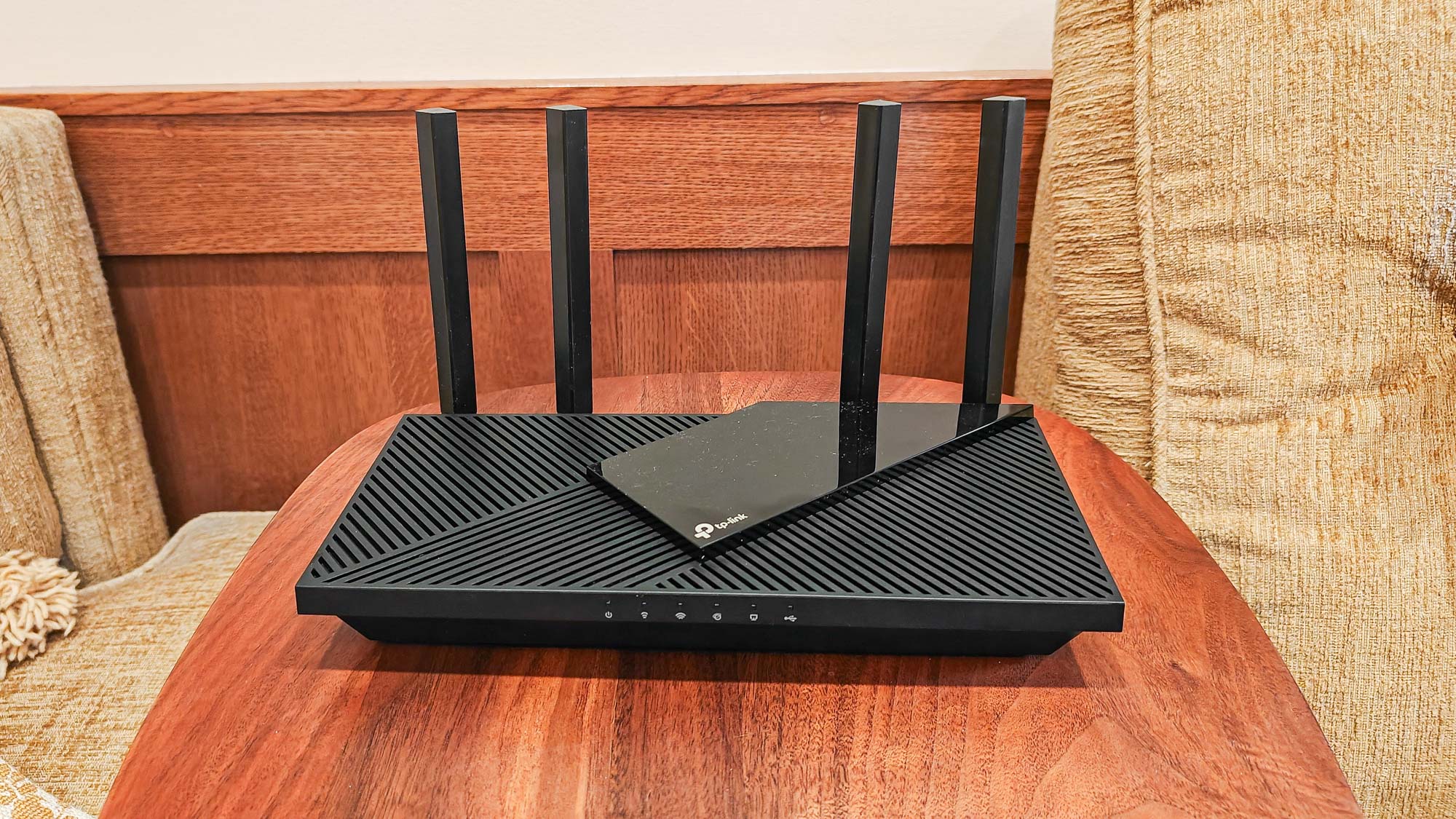
Whether you’re looking to get more performance out of your home network, extend your range or support more devices at the same time, investing in one of the best Wi-Fi routers is going to make your life easier.
To determine which Wi-Fi routers are truly the best, we put them through extensive real-world testing. This included running benchmarks at multiple distances to measure both speed and range. Plus, we evaluate how well each router can move data through walls and ceilings in a real home.
Based on our extensive benchmarking, the best Wi-Fi router overall is the Asus RT-BE96U. This router uses the latest Wi-Fi 7 standard for the best possible speed and lowest latency, and it delivered blazing throughput in our tests with a range of over 100 feet. If you’re on a budget, the TP-Link Archer AX55 is a great value pick, offering strong speeds over Wi-Fi 6 for under $100.
There’s lots of other great Wi-Fi routers we recommend for different use cases based on our reviews, including mesh systems for the ultimate home coverage and gaming routers for the smoothest performance. Here’s the best Wi-Fi routers you can buy right now.
The quick list
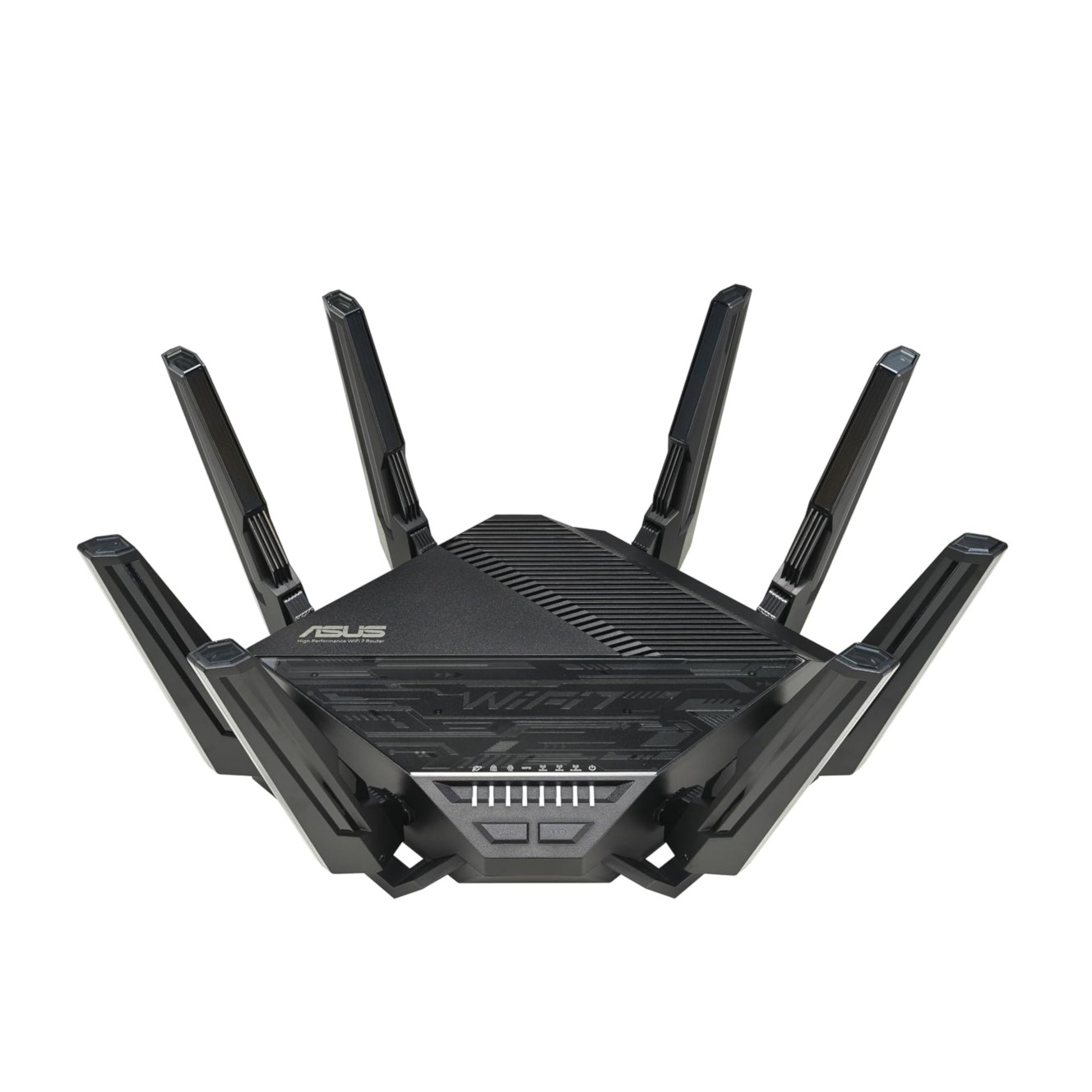
Performance: ★★★★★
Range: ★★★★★
Value: ★★★☆☆
This Wi-Fi 7 router has excellent range, built-in security software, all the ports you'll need, and delivered some of the fastest speeds on our tests. However, all this doesn't come cheap.
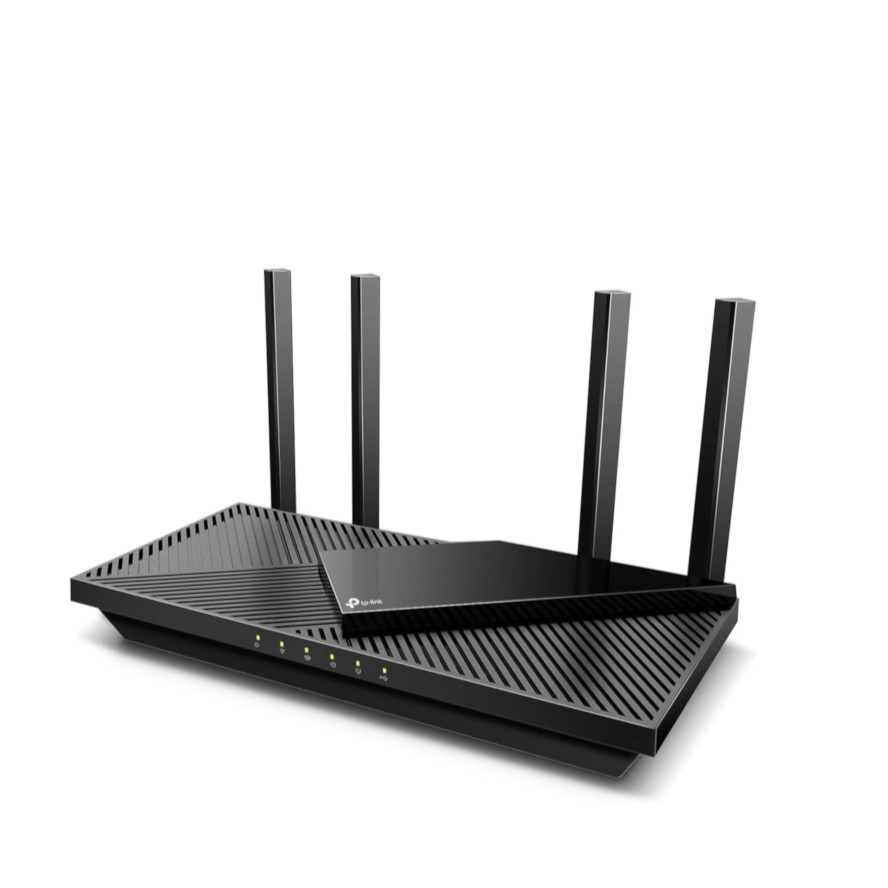
Performance: ★★★☆☆
Range: ★★★★★
Value: ★★★★★
This Wi-Fi 6 router is an absolute bargain with excellent range, a good selection of ports and it’s quite compact. However, it performed much better close up than it did at a distance.
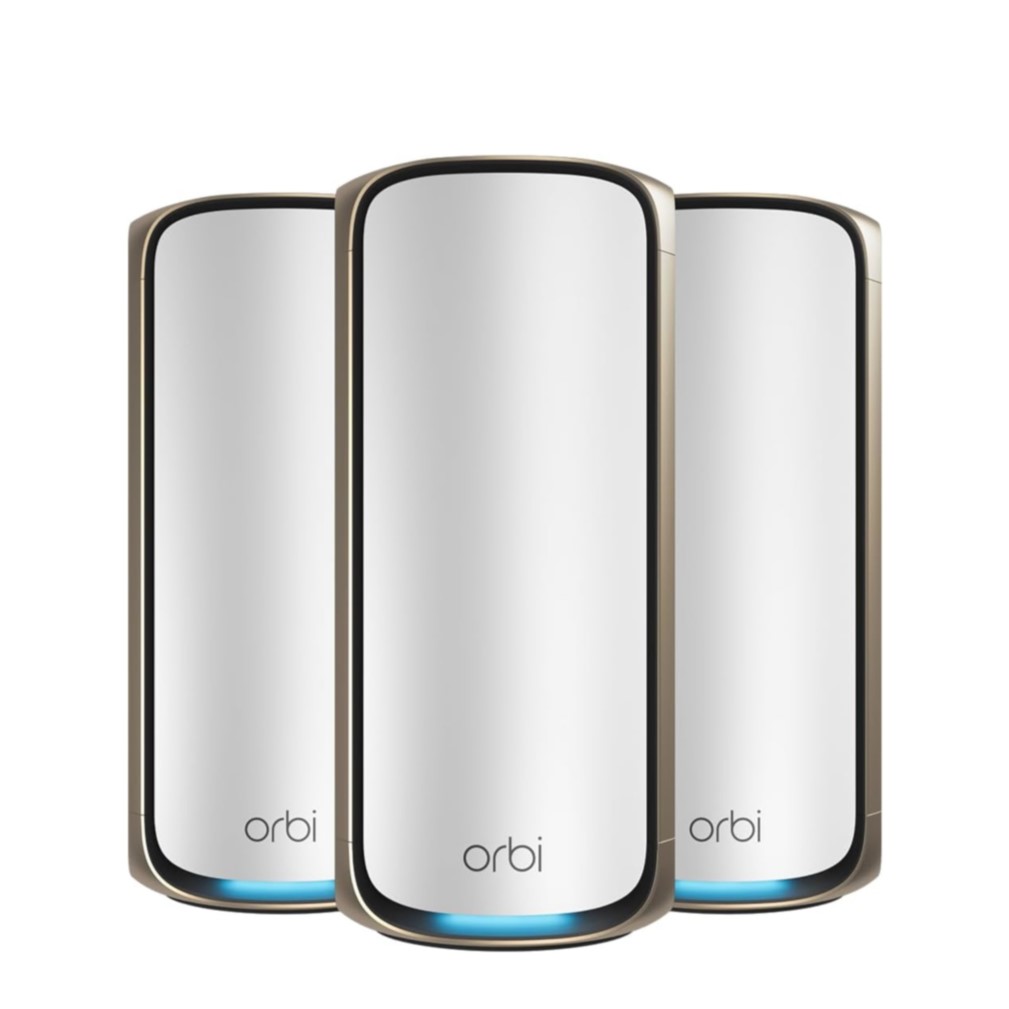
Performance:★★★★☆
Range: ★★★★☆
Value: ★★☆☆☆
This Wi-Fi 7 mesh router provides excellent speeds, great coverage and was one of the fastest we’ve tested yet. However, it’s quite expensive and only comes with a one-year warranty.
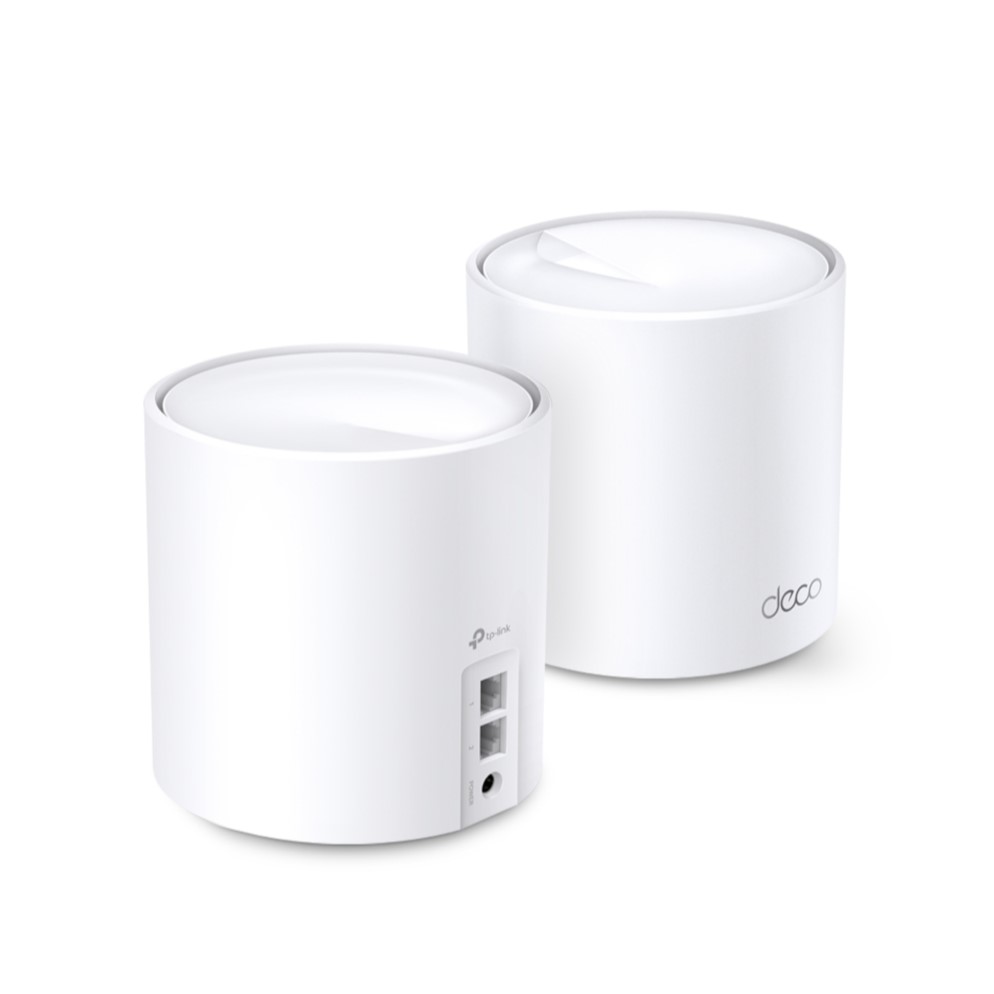
Performance: ★★★☆☆
Range: ★★★★☆
Value: ★★★★★
This Wi-Fi 6 mesh router is very affordable, has excellent range and it and its satellites are small and compact. It only has two ports on the back though.
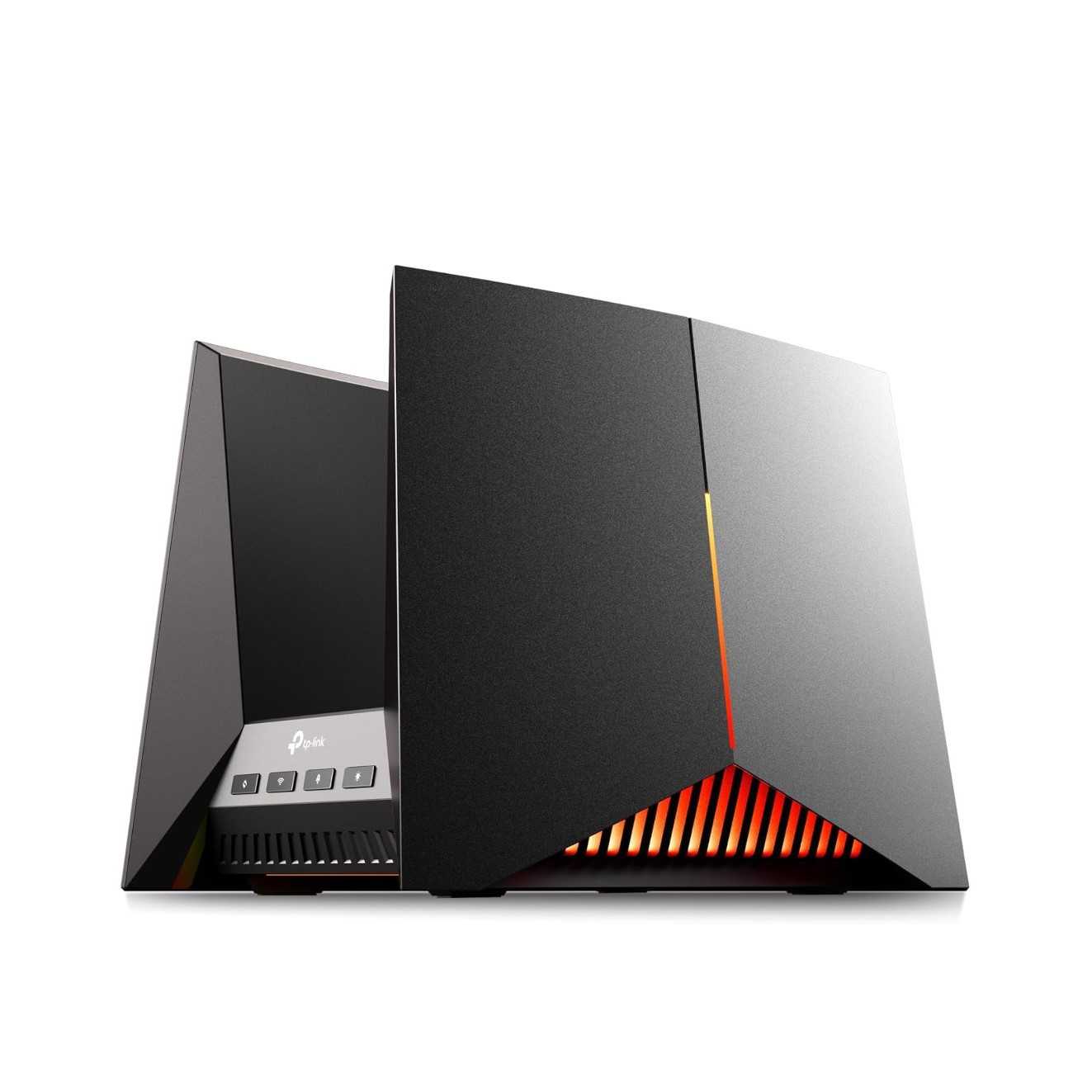
Performance: ★★★★☆
Range: ★★★★☆
Value: ★★★★☆
This Wi-Fi 7 gaming router sports a futuristic design, comes with loads of ports and even has built-in RGB lighting. It is on the large side though and runs hot even with a fan.
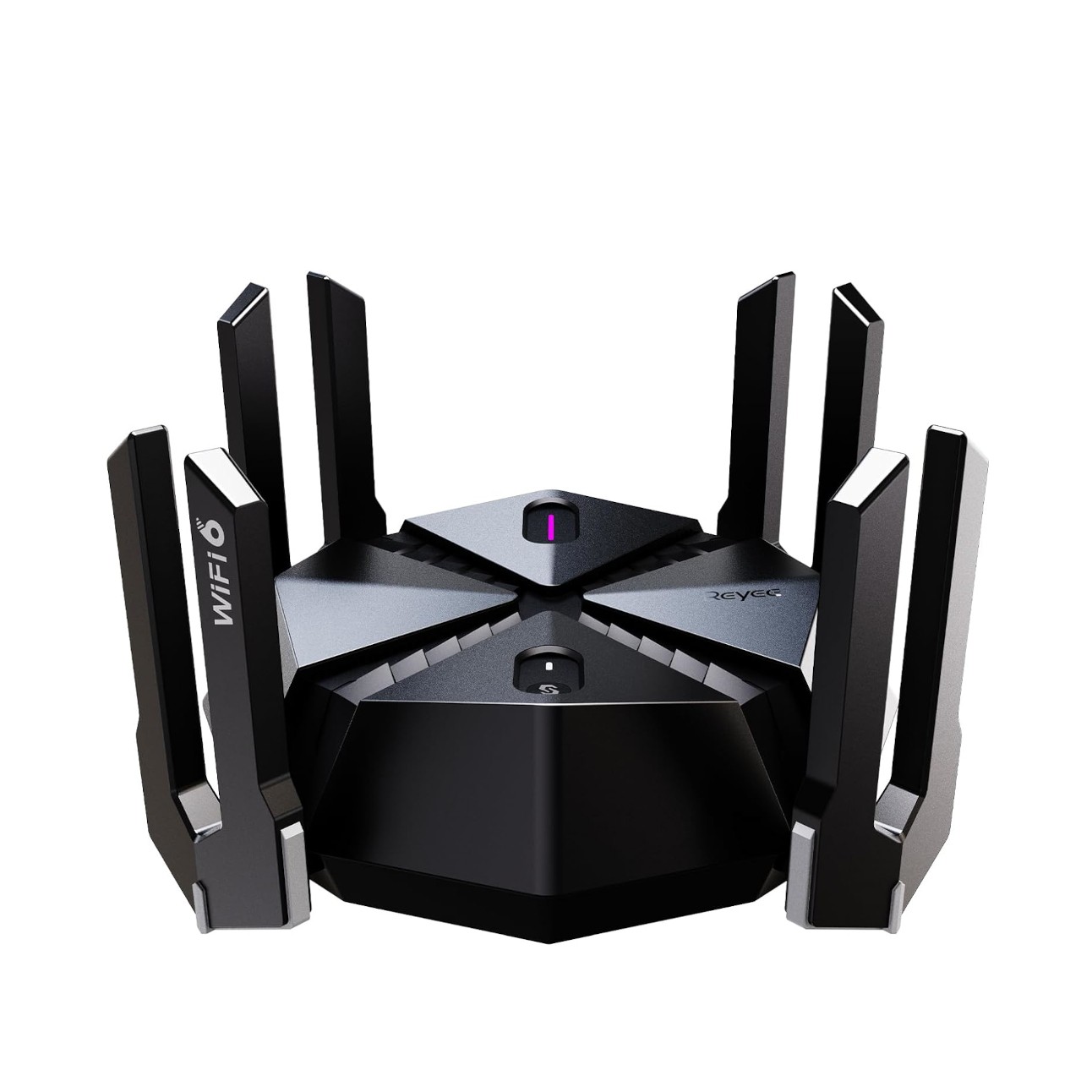
Value: ★★★★☆
Performance: ★★★★☆
Range: ★★★☆☆
This Wi-Fi 6 gaming router has 8 high-powered antennas for improved wall penetration, strong close and midrange performance, a dedicated gaming port and best of all, it’s very affordable.
Click to view more options...
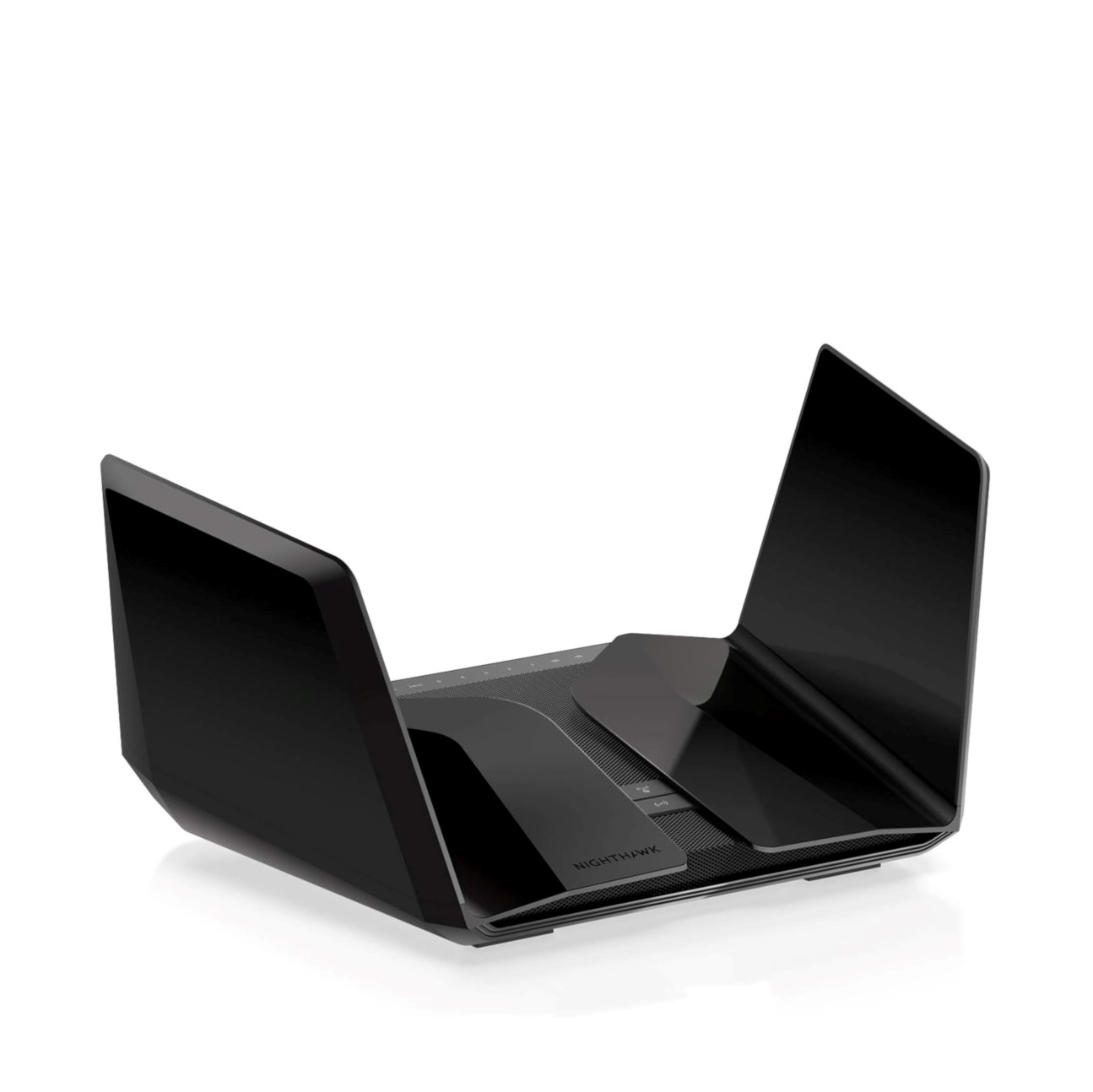
Performance: ★★★★★
Range: ★★★★★
Value: ★★★☆☆
This Wi-Fi 6E router has a unique design, provides excellent speeds and comes with security software built-in. Its speeds were great up close but fell off at longer distances though.
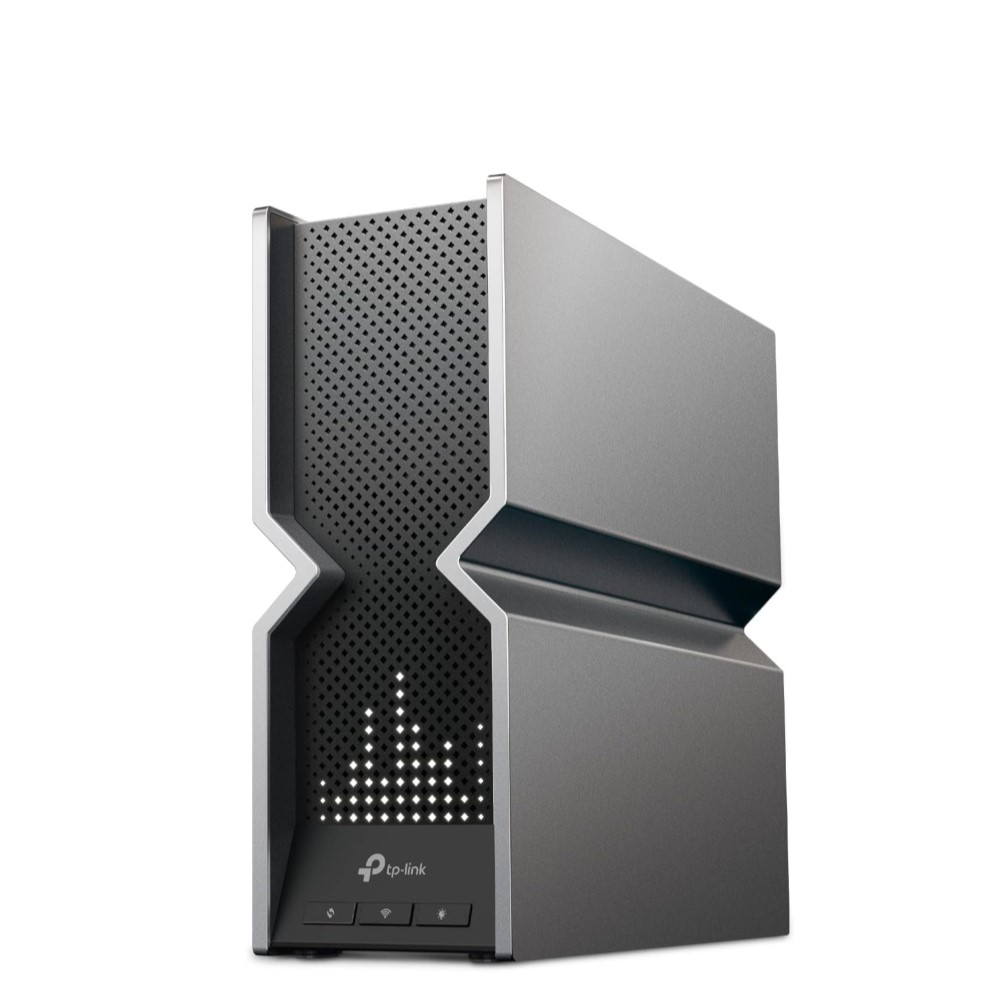
Performance: ★★★★★
Range: ★★★★★
Value: ★★★★☆
This Wi-Fi 7 router has a customizable big dot display, good range and comes with built-in security software. It is on the large side though and it carries a higher price.
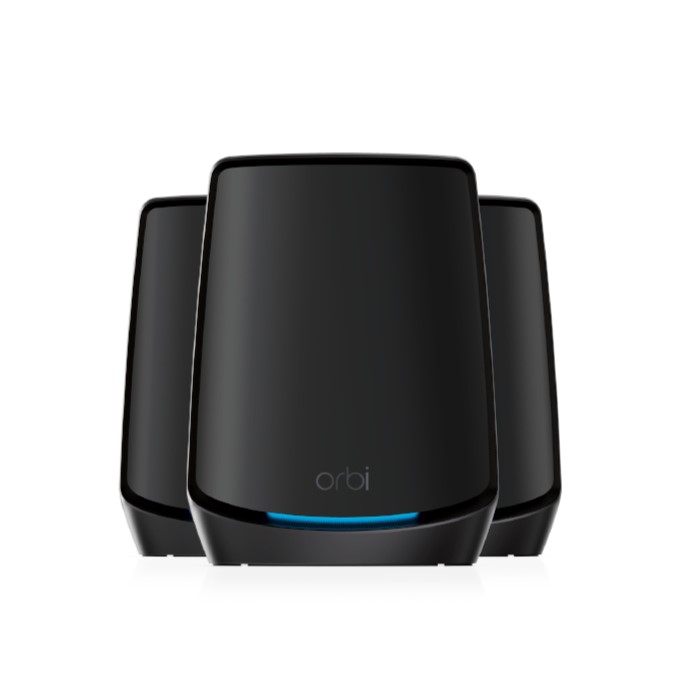
Performance: ★★★★☆
Range: ★★★★★
Value: ★★★☆☆
This Wi-Fi 6 mesh router has great range, great performance and it lets you create a separate smart home network. All of this doesn’t come cheap though and support is limited to 90 days.
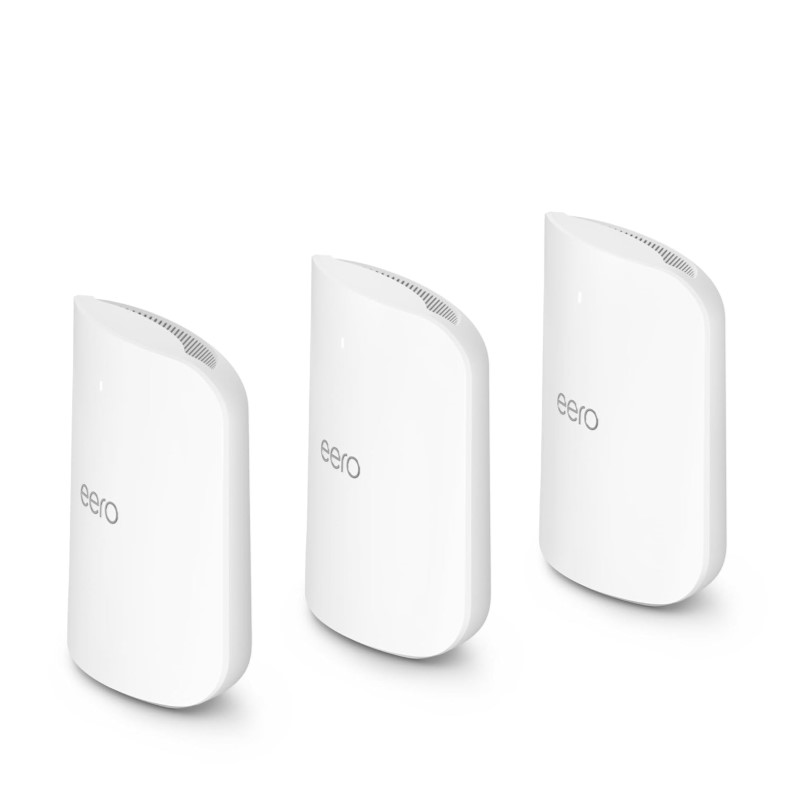
Performance: ★★★★☆
Range: ★★★★☆
Value: ★★★☆☆
This Wi-Fi 7 mesh router is simple to set up, offers good performance up close and comes with all the ports you need. Extra security and parental controls require a subscription though.
The best Wi-Fi routers you can buy today
Why you can trust Tom's Guide
Best Wi-Fi router overall
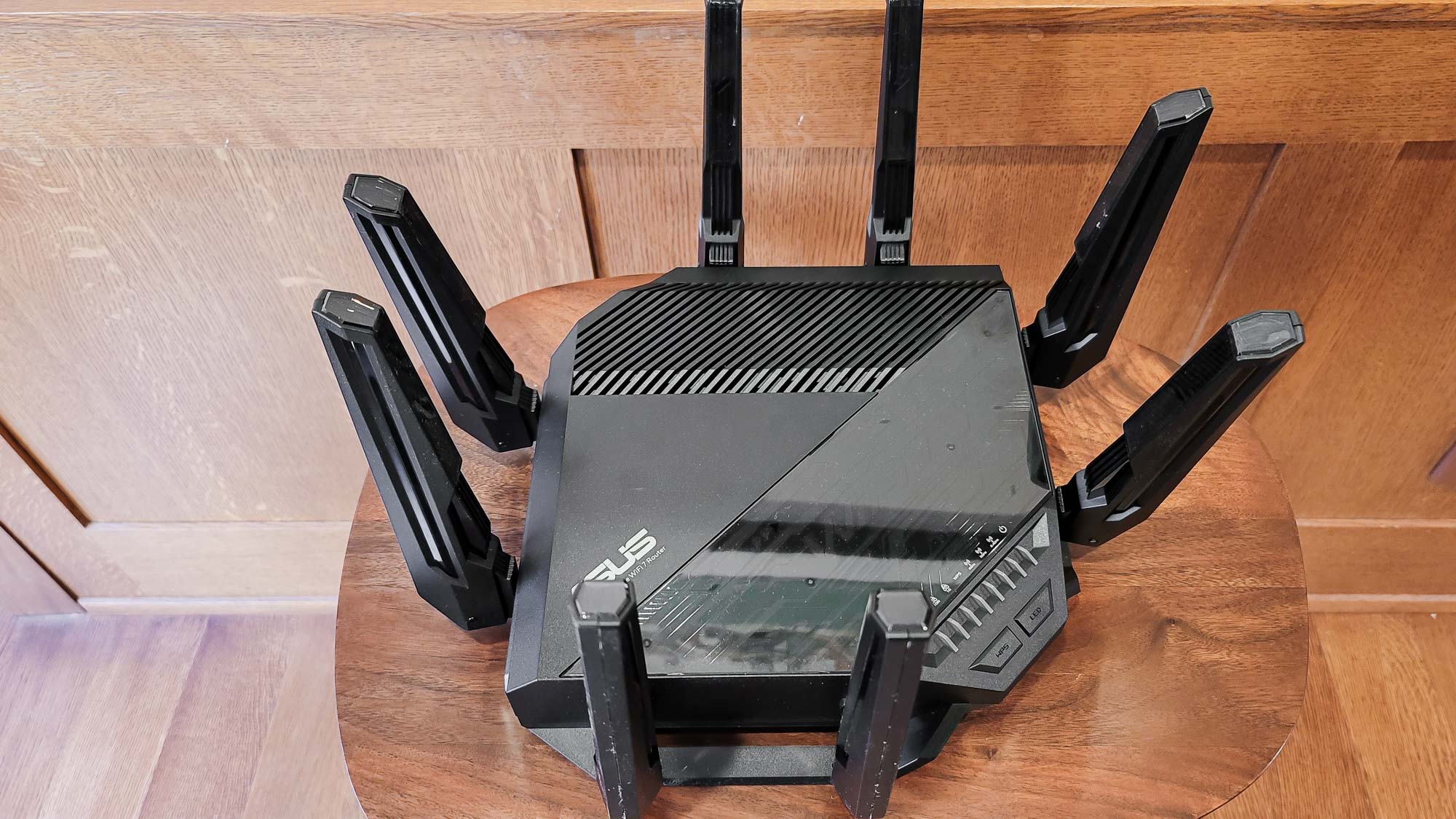
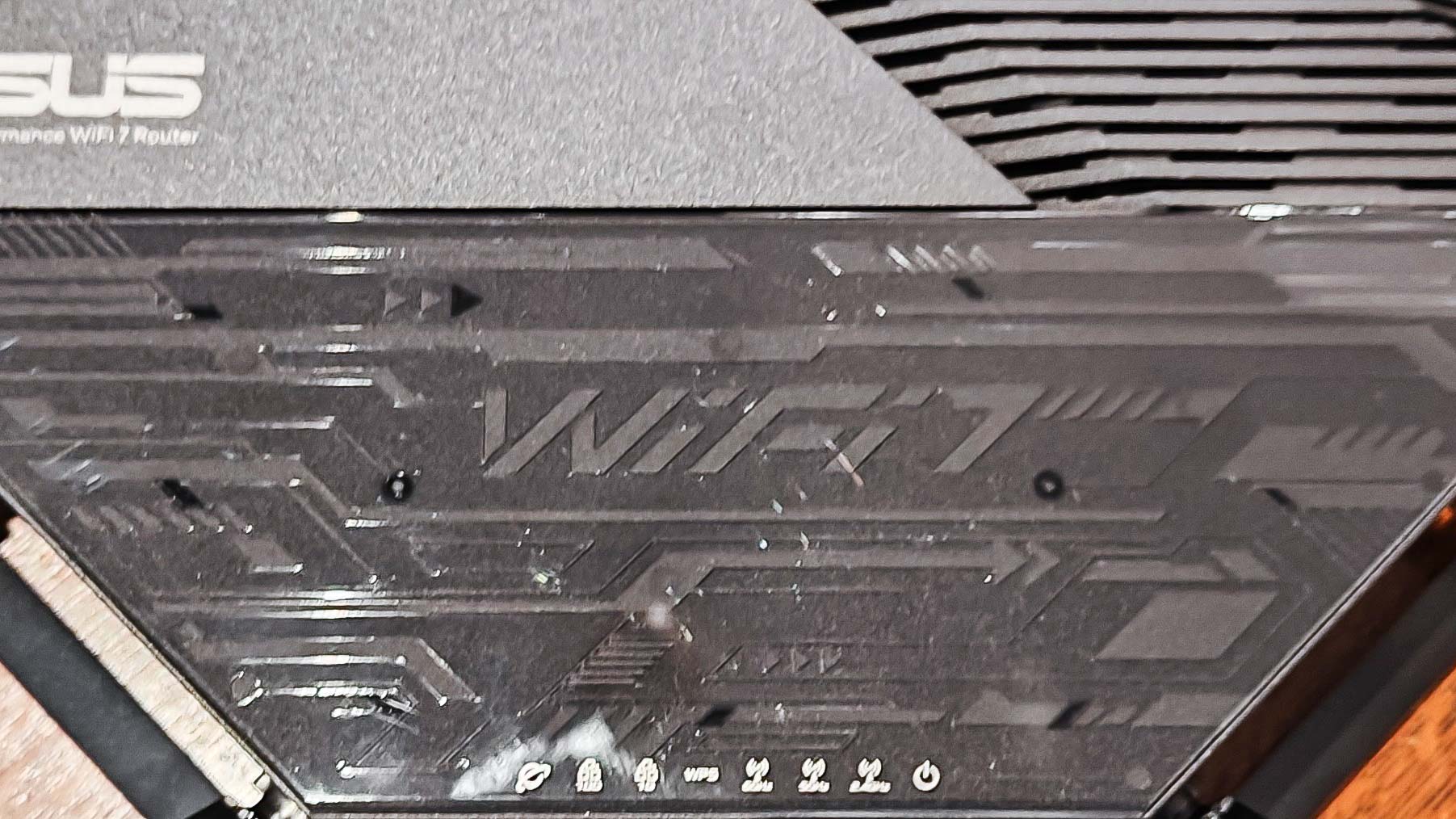
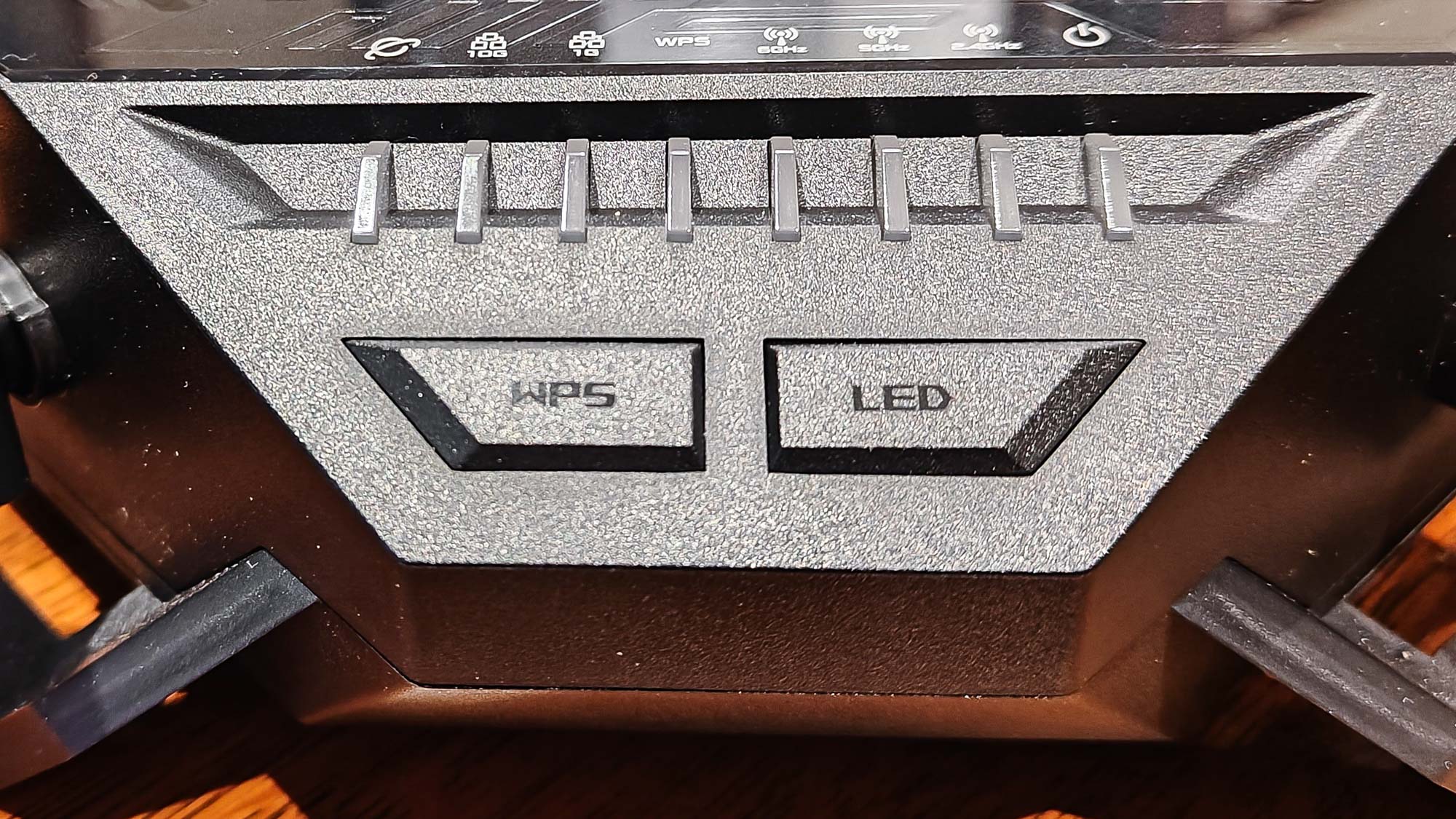
Specifications
Reasons to buy
Reasons to avoid
✅ You want a futureproof Wi-Fi router: The Asus RT-BE96U comes with Wi-Fi 7 on board so you won’t need to upgrade anytime soon if you get this router.
✅ You don’t want to pay extra for security software: Asus includes its AiProtection security software free of charge which is based on Trend Micro’s antivirus software.
❌You don’t have gigabit internet: A powerful Wi-Fi 7 router just doesn’t make sense if you’re internet speeds are less than a gigabit.
❌ Price is a big concern: At $700 the Asus RT-BE96U is on the expensive side. If you’re on a budget just wait as cheaper Wi-Fi 7 routers are coming.
The Asus RT-BE96U is a blazing fast Wi-Fi 7 router that checks all the boxes, though it is on the expensive side at $699. For the price though, you're getting a tri-band router with built-in security software and excellent range. The Asus RT-BE96U has eight antennas at the top which can be rotated or angled for a better signal. The device itself sports a sleek, all-black design with a subtle "7" on the top to let you know this is a Wi-Fi 7 router after all.
One reason you might consider spending a bit more on the Asus RT-BE96U is for its excellent speeds. During our testing, this router delivered 1.948 Gbps at 15 feet and it was able to hold a connection even when our test laptop was 105 feet away. There are plenty of ports at the back including several multi-gig ones. With the Asus RT-BE96U, you get a 10 Gbps and a gigabit WAN, a 10 Gbps LAN and three gigabit Ethernet ports plus two USB 3.0 ports for moving data across your network from a flash drive or external hard drive.
If you have a need for speed and want a reliable router you can use for years to come, the Asus RT-BE96U is currently your best option.
Read our full Asus RT-BE96U review.
Best budget Wi-Fi router

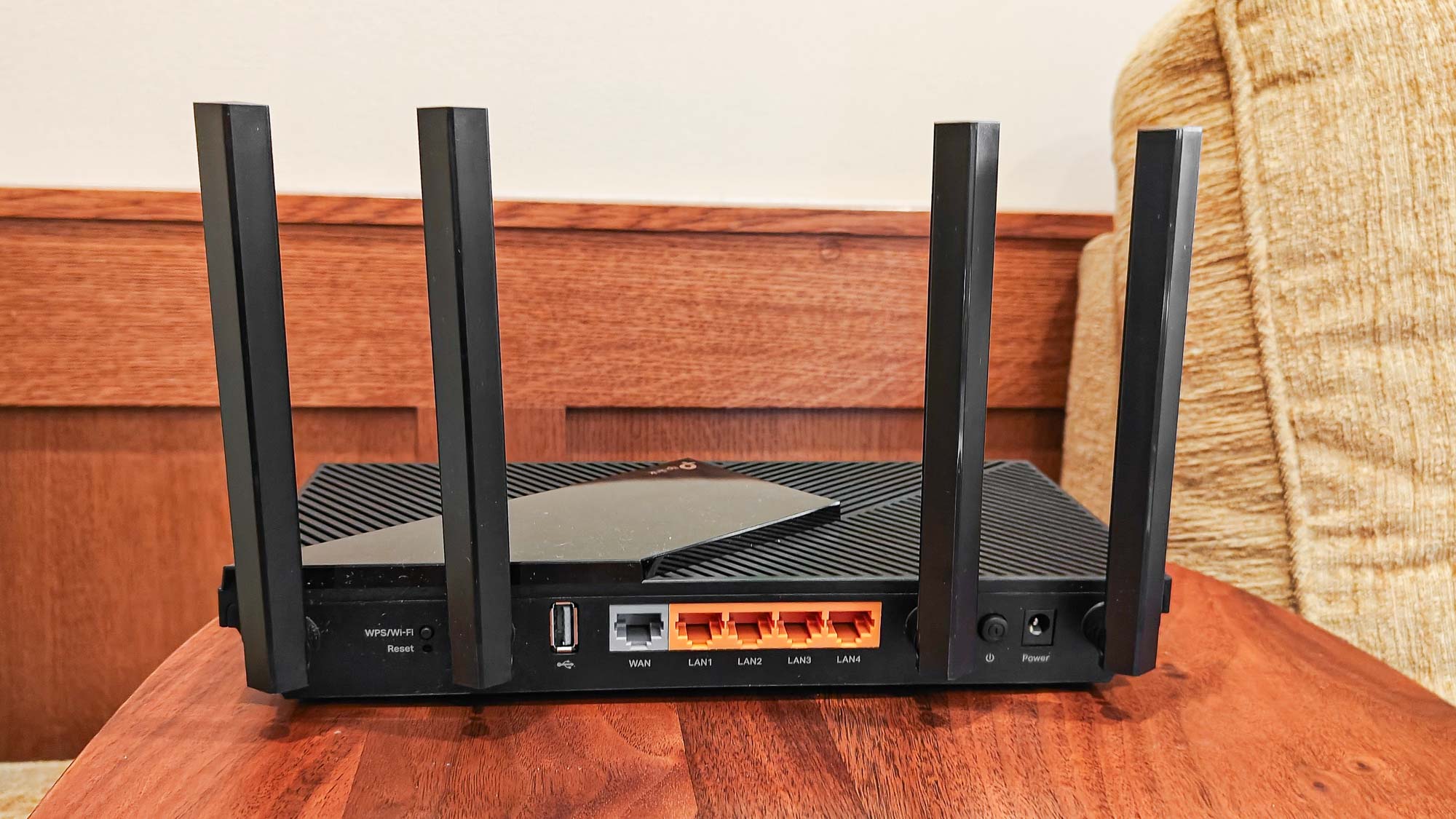
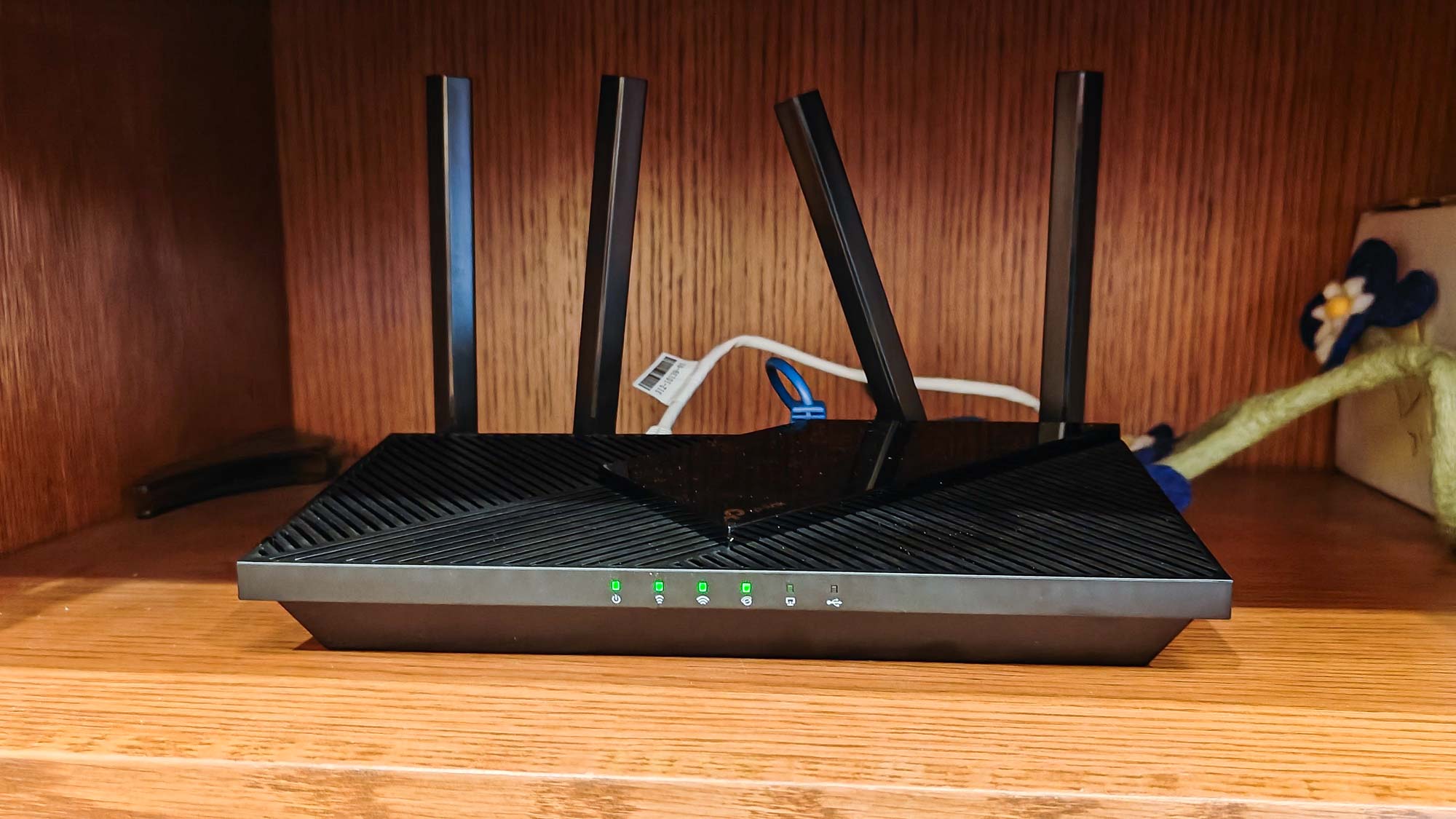
Specifications
Reasons to buy
Reasons to avoid
✅ You want an inexpensive Wi-Fi 6 router: With a list price of just over $100 and the fact that’s often on sale, the TP-Link Archer AX55 is a very affordable Wi-Fi 6 router.
✅ You want a small, compact router: At 10.2 x 5.2 x 1.5-inches, the Archer AX55 is quite small for a Wi-Fi 6 router and won’t take up too much space in your home.
❌ You have a larger home or apartment: The Archer AX55 did well at short distances in our speed tests but fell off at mid-distances making it a less than ideal choice for larger spaces.
❌ You want the latest wireless tech: This is a Wi-Fi 6 router and doesn’t come with the faster 6 GHz band available with Wi-Fi 6E or Wi-Fi 7.
The TP-Link Archer AX55 is a Wi-Fi 6 bargain with a list price of just $130. However, you can often find it on sale for just over $100. For the price, you're getting a small and easy to hide Wi-Fi 6 router with excellent range, lots of setup options and a 2-year warranty. The TP-Link Archer AX55 is a dual-band router with four antennas that can also be repositioned for a better signal.
During our testing, the TP-Link Archer AX55 was able to reach speeds of 823.7 Mbps at a distance of 15 feet and it had an overall range of 110 feet. On the back, you'll find a single gigabit WAN port along with four gigabit LAN ports as well as a USB 3.0 port for moving data across your network. The TP-Link Archer AX55 has an all-black design with some cutouts at the top and soft rubber feet on the bottom. If you're after a quick, easy and inexpensive upgrade for your home network, the TP-Link Archer AX55 will more than do the trick.
Read our full TP-Link Archer AX55 review.
Best Wi-Fi mesh system
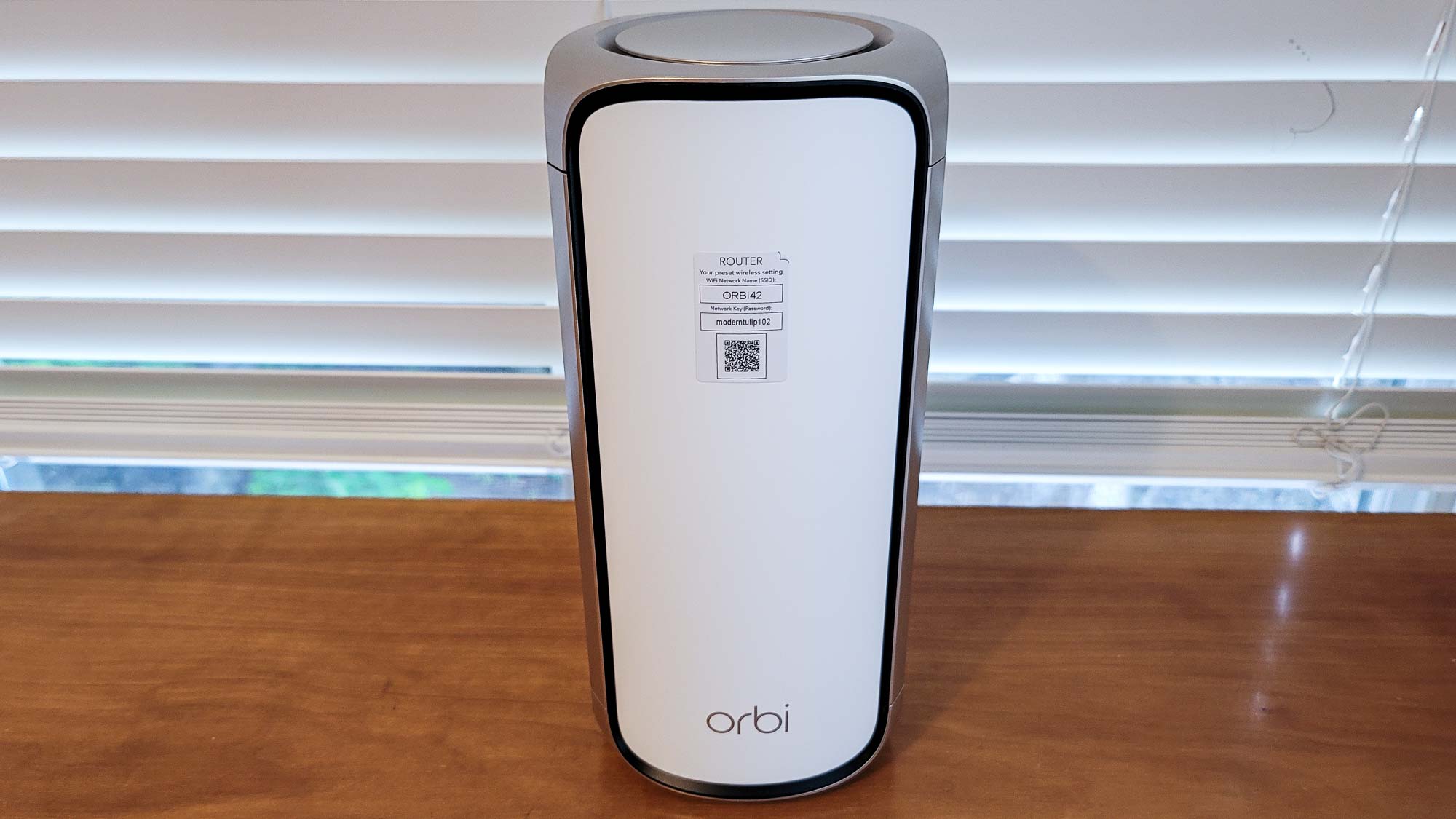
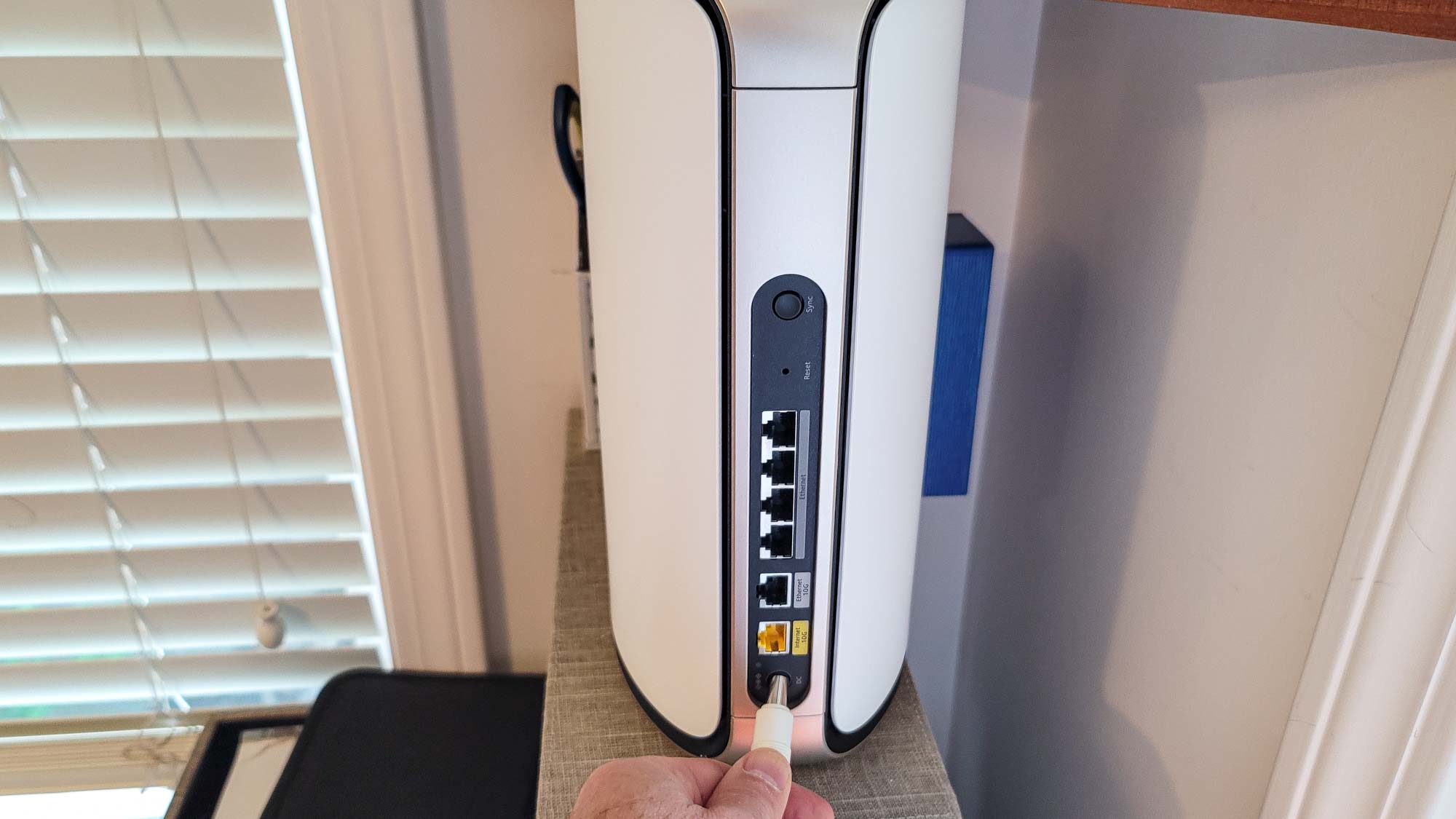
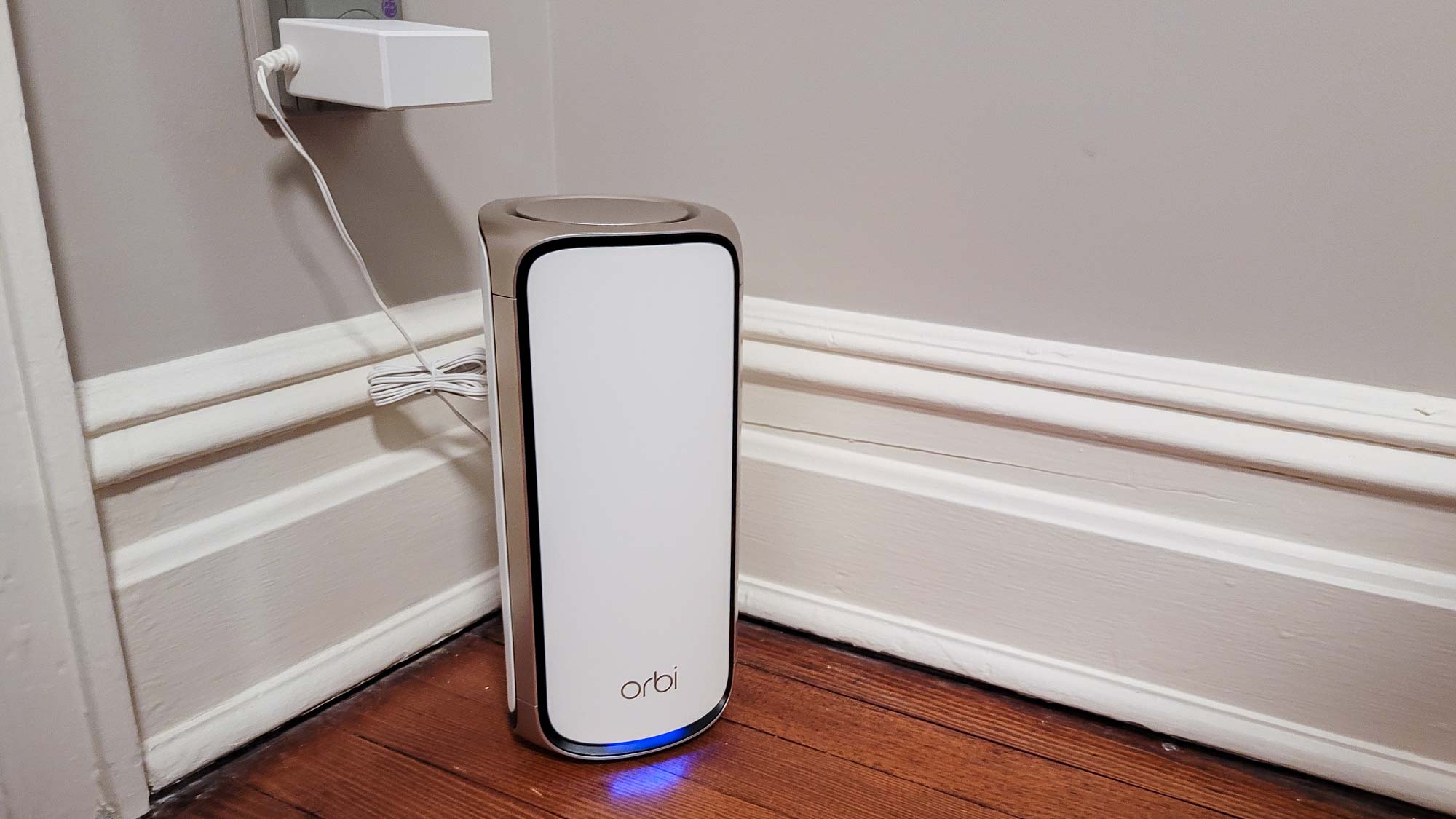
Specifications
Reasons to buy
Reasons to avoid
✅ You have a multi-gig internet plan: The Orbi RBE973 is a great choice for those with multi-gigabit internet plans as it has two 10 Gbps Ethernet ports.
✅ You have a huge house: Each Orbi RBE973 device has a range of 3,300 feet and a three-pack can cover up to 10,0 square feet.
❌ You're on a budget: The Orbi RBE973 is the most expensive Wi-Fi 7 mesh router released to date.
❌ You want free tech support: Netgear only includes 90 days of free tech support. After that, you'll have to pay
Netgear's Orbi RBE973 is one of the best mesh Wi-Fi systems on the planet — and also one the most expensive. But if you have money to burn, a multi-gig internet plan and an enormous house, this is probably the mesh system for you.
The Orbi RBE973 can cover up to 10,000 square feet with a three-pack but a two-pack can cover 6,600 square feet. At a distance of 15 feet, this Wi-Fi 7 mesh system delivered throughput of more than two gigabits per second and was the fastest router we've tested yet.
Each unit has 12 amplified isotropic antennas and one 10 Gbps and two 2.5 Gbps Ethernet ports. Like the Orbi Wi-Fi 6E it replaces in Netgear's lineup, the RBE973 creates channels on the 2.5, 5 and 6-Ghz bands, plus a fourth 5-Ghz one for backhaul between units. Netgear offers trial subscriptions to its Armor security software, which includes Bitdefender antivirus, and parental controls. You'll also have to pay for tech support after 90 days. However, if you can afford to pay for this mesh system, you won't mind.
Read our full Netgear Orbi RBE973 review.
Best budget mesh system
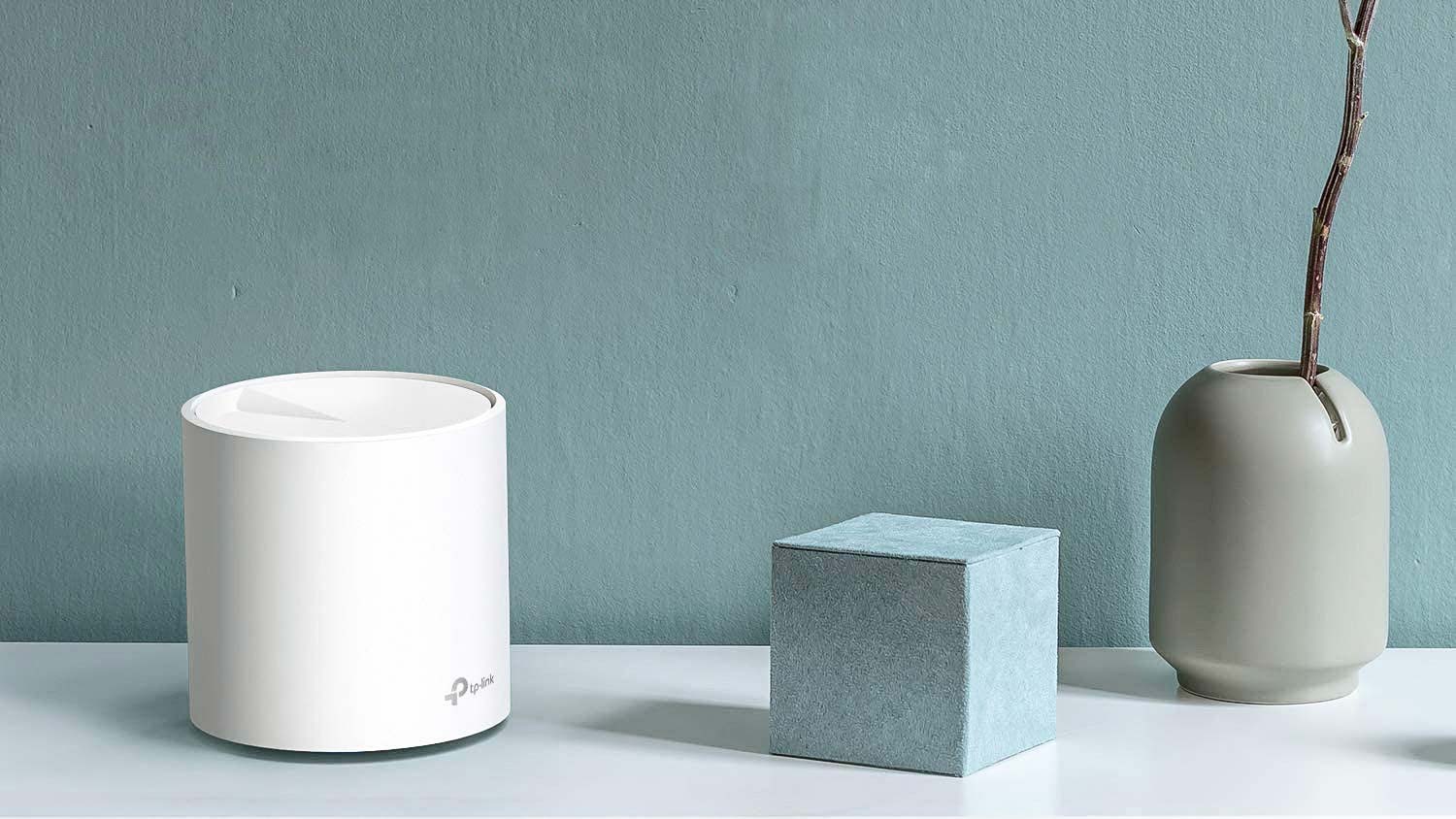
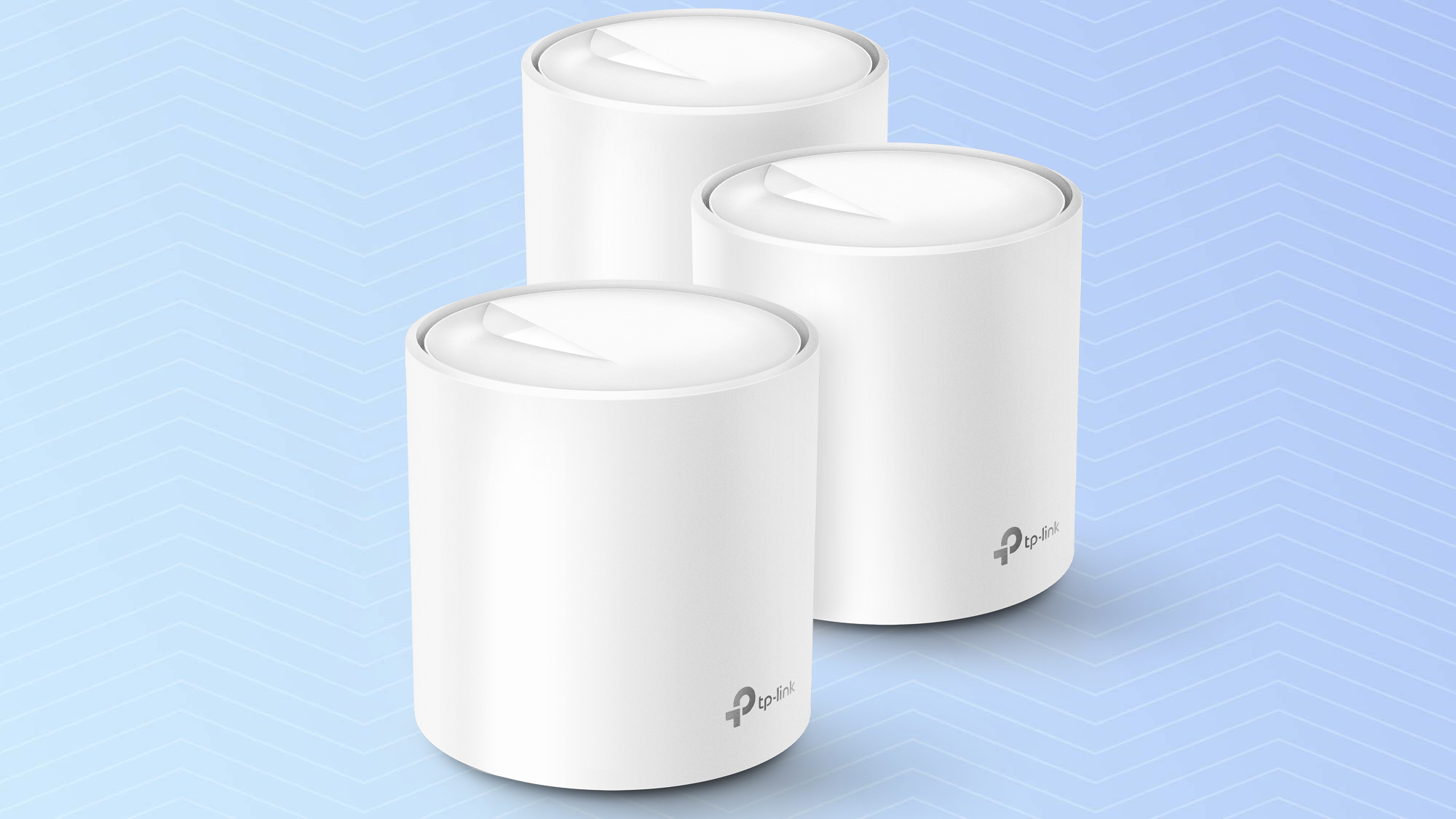
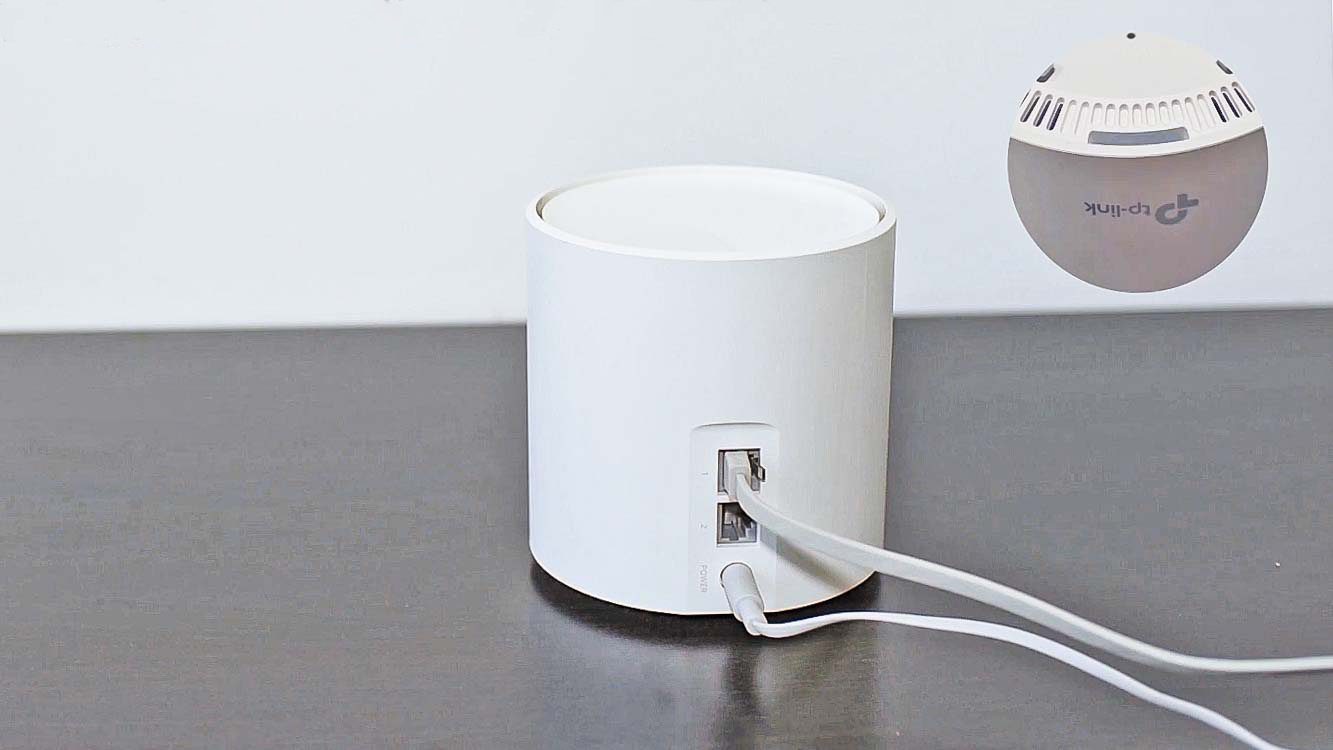
Specifications
Reasons to buy
Reasons to avoid
✅ You want to upgrade to a mesh router on a budget: The Deco X20 is the perfect choice for those that want an affordable mesh router that performs well.
✅ You want something small and easy to hide: At 4.3 x 4.3 x 4.5-inches, the Deco X20 units are smaller than other mesh routers.
❌ You need a lot of ports: Each Deco X20 unit only has two Ethernet ports which means you’ll need a network switch if you have a lot of wired devices.
❌ You want a dedicated back channel for data: Other mesh routers have a dedicated band just for the units to communicate with one another which frees up bandwidth for your devices.
The TP-Link Deco X20 is an inexpensive mesh Wi-Fi system that's relatively small and very easy to set up. In fact, during our testing, we were able to get it up and running in 15 minutes or so using the company's Deco app which also allows you to enable parental controls and comes with built-in security. For just $200, you can cover up to 5,800 square feet with a strong Wi-Fi 6 signal.
Unlike with other mesh routers, all of the Deco X20 units are interchangeable and serve as either a router or a satellite. Each one has two gigabit Ethernet ports at the rear but there aren't any USB ports for sharing data from a flash drive across your network. In our testing, the Deco X20 achieved download speeds of 622 Mbps at 15 feet with a total overall range of 95 feet. If you're looking for a budget mesh Wi-Fi system with units that are easy to tuck away on a bookshelf or place on a countertop, the Deco X20 delivers quite a lot of value for the price.
Read our full TP-Link Deco X20 review.
Best Wi-Fi router for gamers
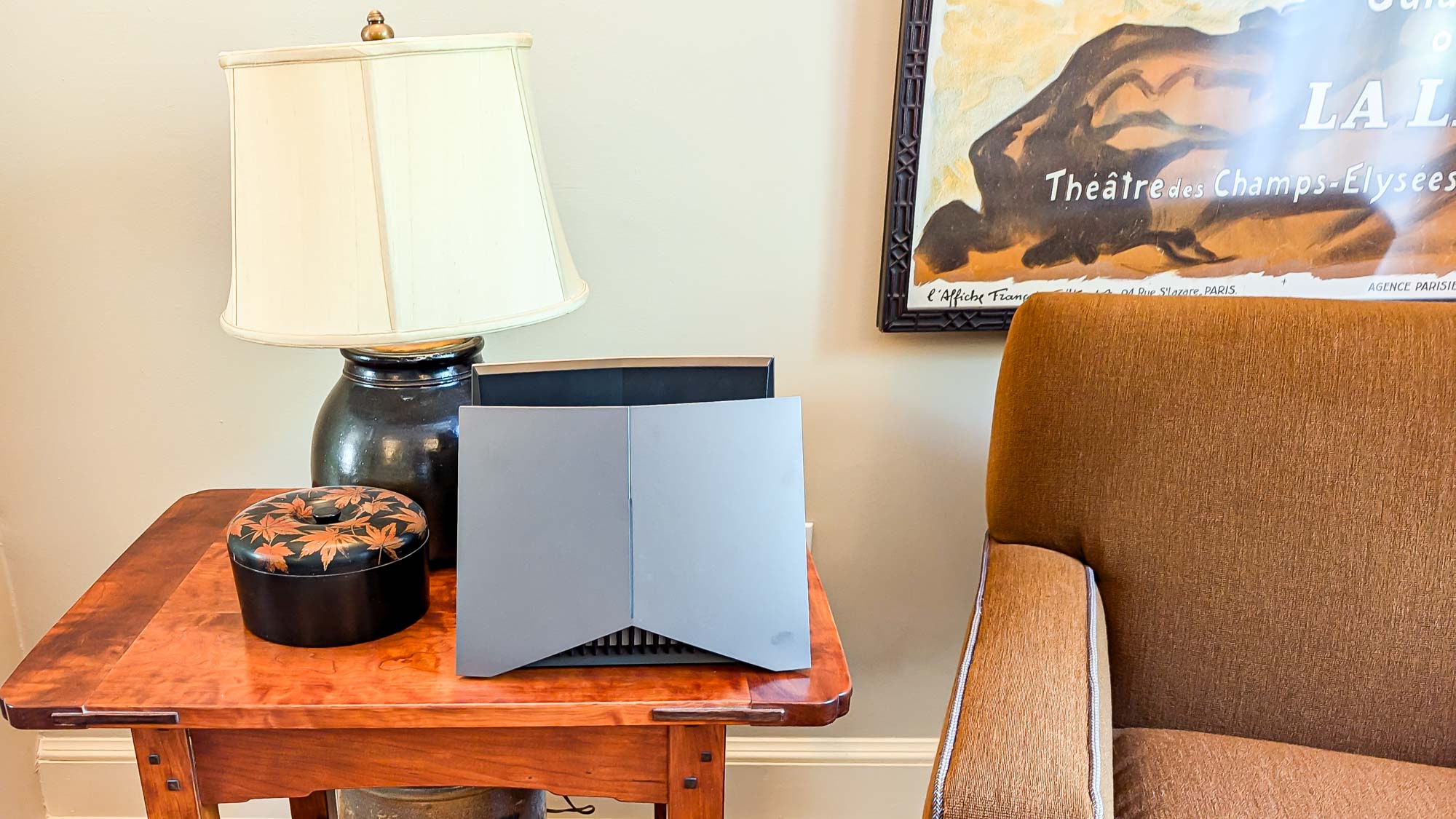
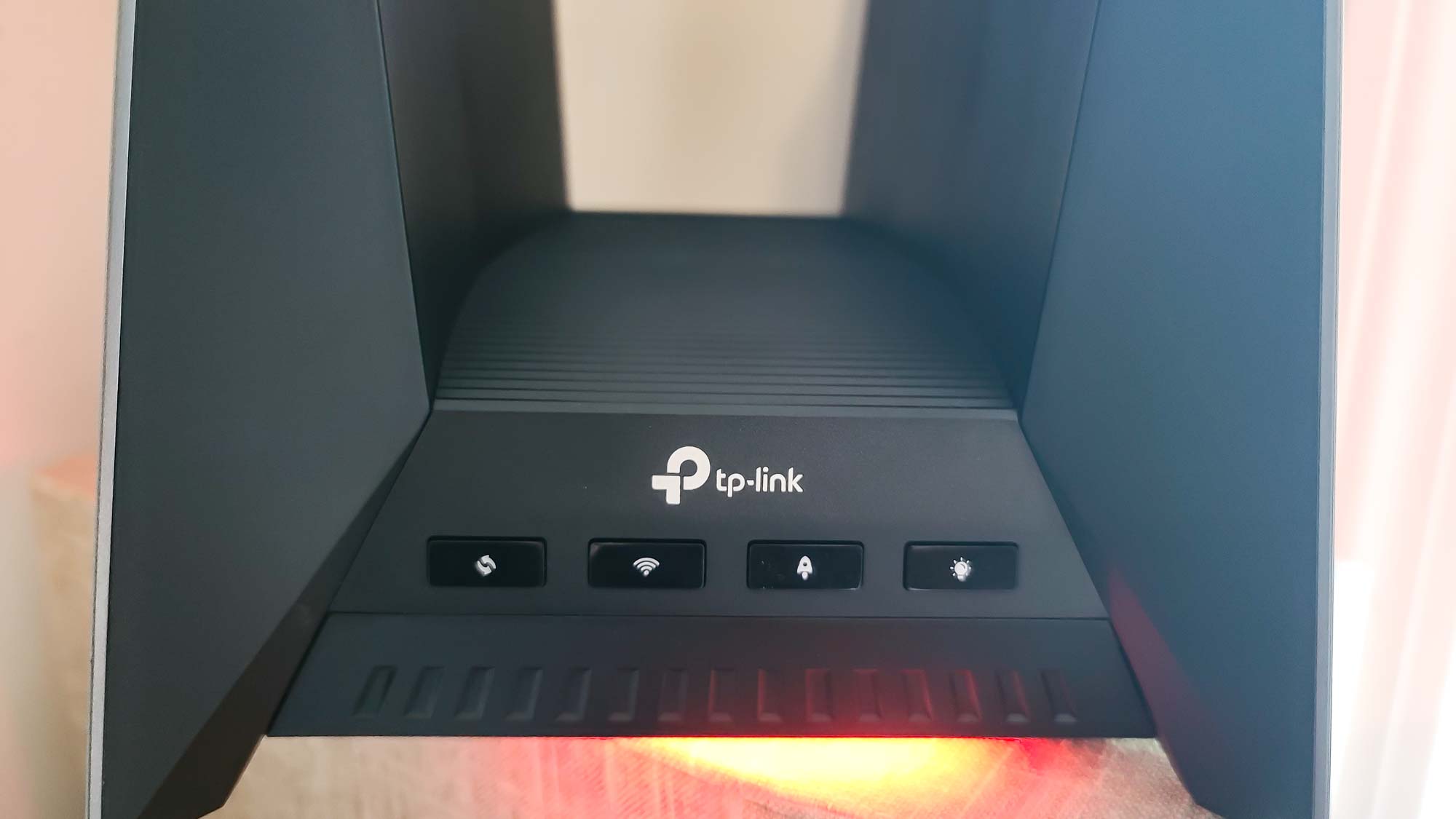
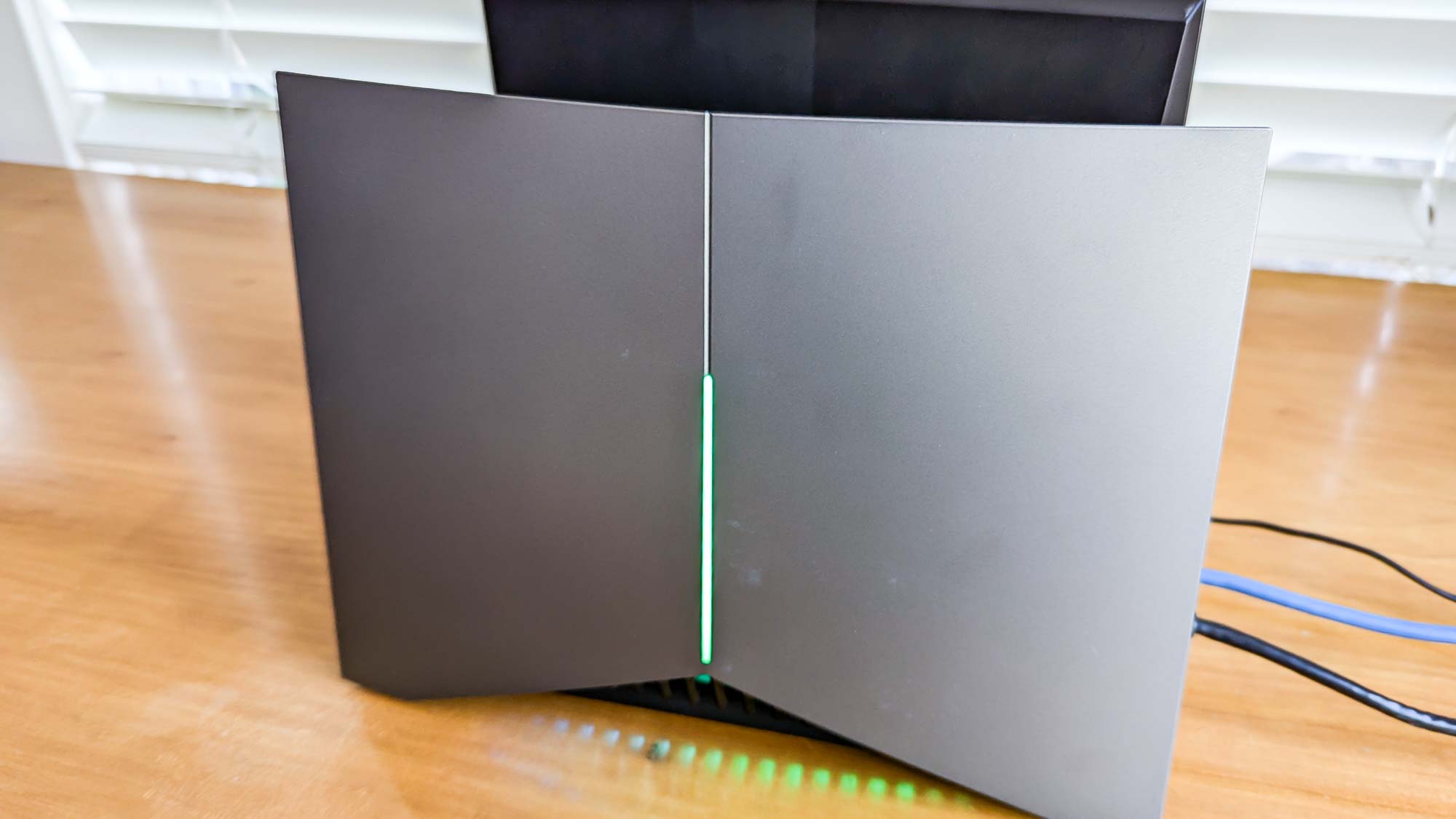
Specifications
Reasons to buy
Reasons to avoid
✅ You need a lot of ports: This gaming router ships with the latest wireless standard and comes equipped with all of the ports you’ll need to take advantage of its faster speeds.
✅ You have multi-gig internet: With two 10 Gbps WAN/LAN ports and a SFP+ port that can be combined with one of them for fiber internet, this router is best paired with a high-speed, multi-gig internet plan to reach its full potential.
❌You’re short on space: At 11.5 x 9.0 x 7.4 inches, this is a larger router and with the wings on either side and RGB lighting, you’re going to want to have it out in the open and not tucked away somewhere.
❌ You want a device that runs cool: In our testing, the underside of this one reached 138.0 degree Fahrenheit while the space between its wings was still hot at 120.1 degrees.
The TP-Link Archer GE800 is a Wi-Fi 7-powered gaming router with low latency, excellent speeds, a dedicated gaming port and a very futuristic design complete with RGB lighting effects. At 11.5 x 9.0 x 7.4 inches, it is on the larger side to accommodate its wings which house its eight antennas.
The Archer GE800 leverages 320 MHz data channels, 4K QAM modulation and other Wi-Fi 7-specific features to deliver both excellent wireless and wired speeds. In our testing, it delivered speeds of up to 1.322 Gbps at a distance of 15 feet and had a total range of 105 feet. This next-gen gaming router is ready for multi-gig internet with four 2.5 Gbps Ethernet ports, two 10 Gbps ones and even an SFP+ optical link for fiber connections. There’s also a USB 3.0 port for moving data across your network.
The Archer GE800’s gaming features are front and center with a dedicated Game Mode button next to a button to control the router’s RGB lighting effects. Through the company’s Tether app or in your browser, you can enable all sorts of dedicated gaming features. From a Game Detector that tests your real-time ping for individual games to game port forwarding, there’s a lot to tweak for the best online gaming experience. The Archer GE800 combines Wi-Fi 7 performance with just about everything a gamer would want from one of the best gaming routers.
Read our full TP-Link Archer GE800 review.
Best budget gaming router
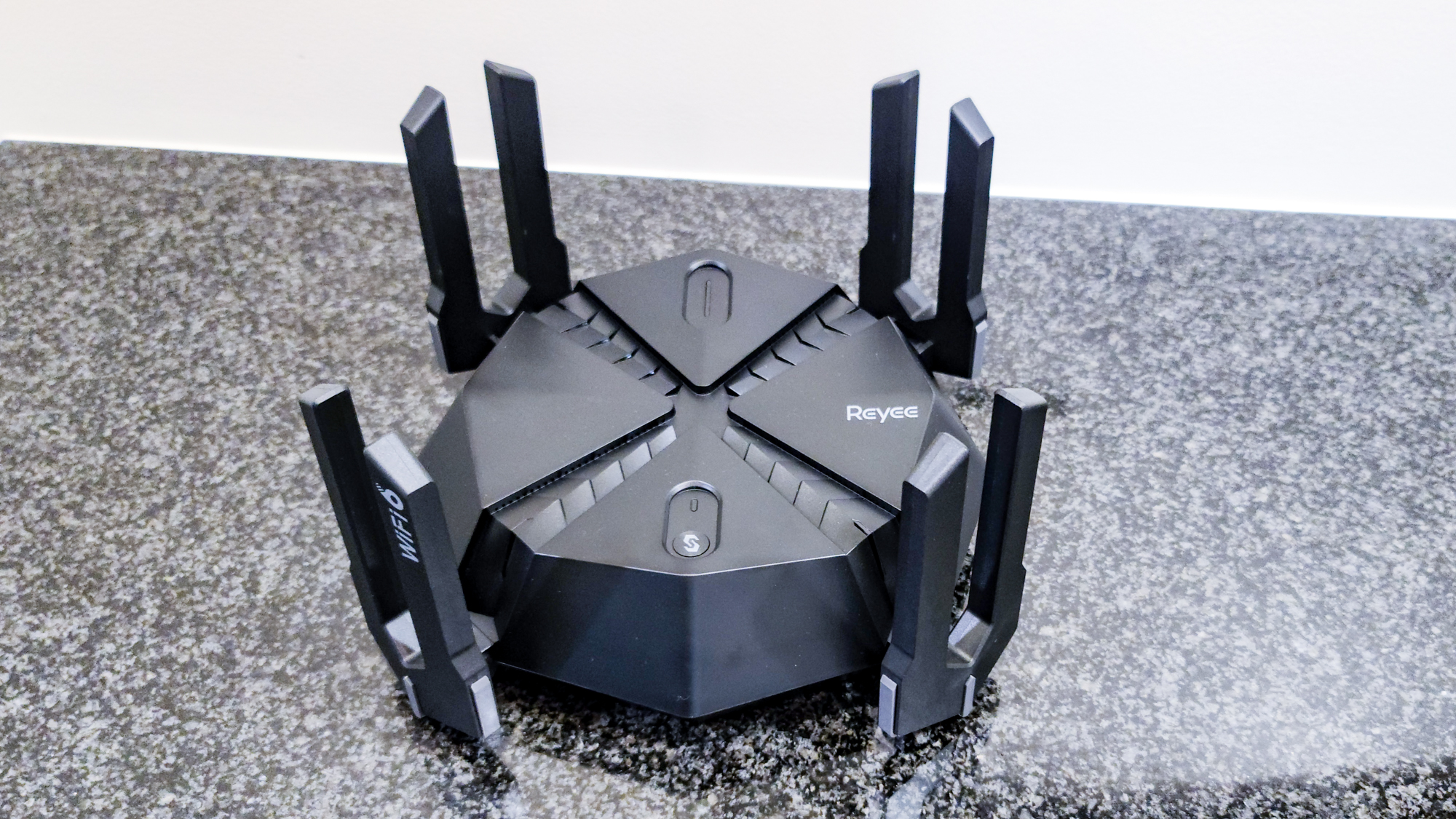
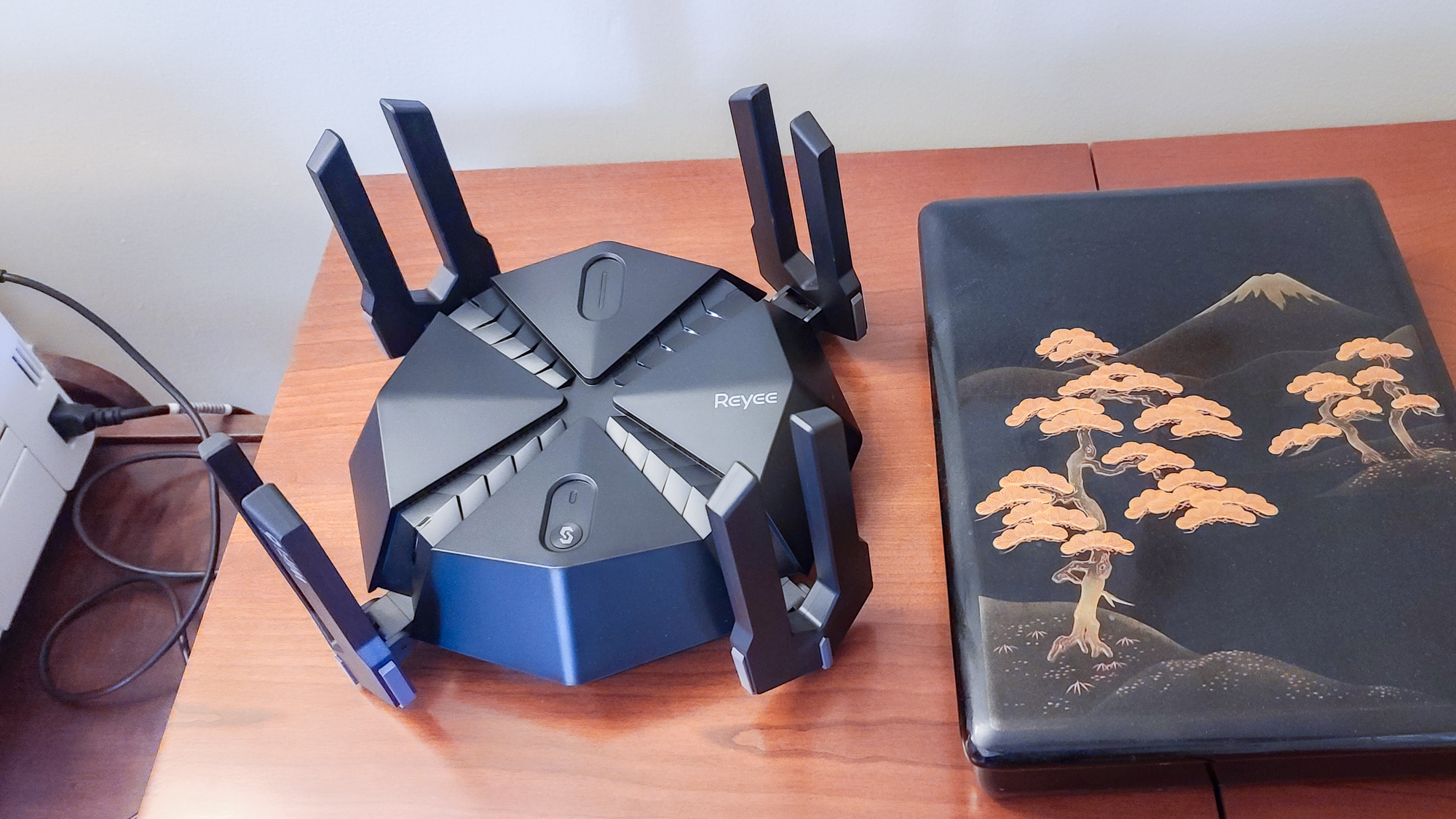
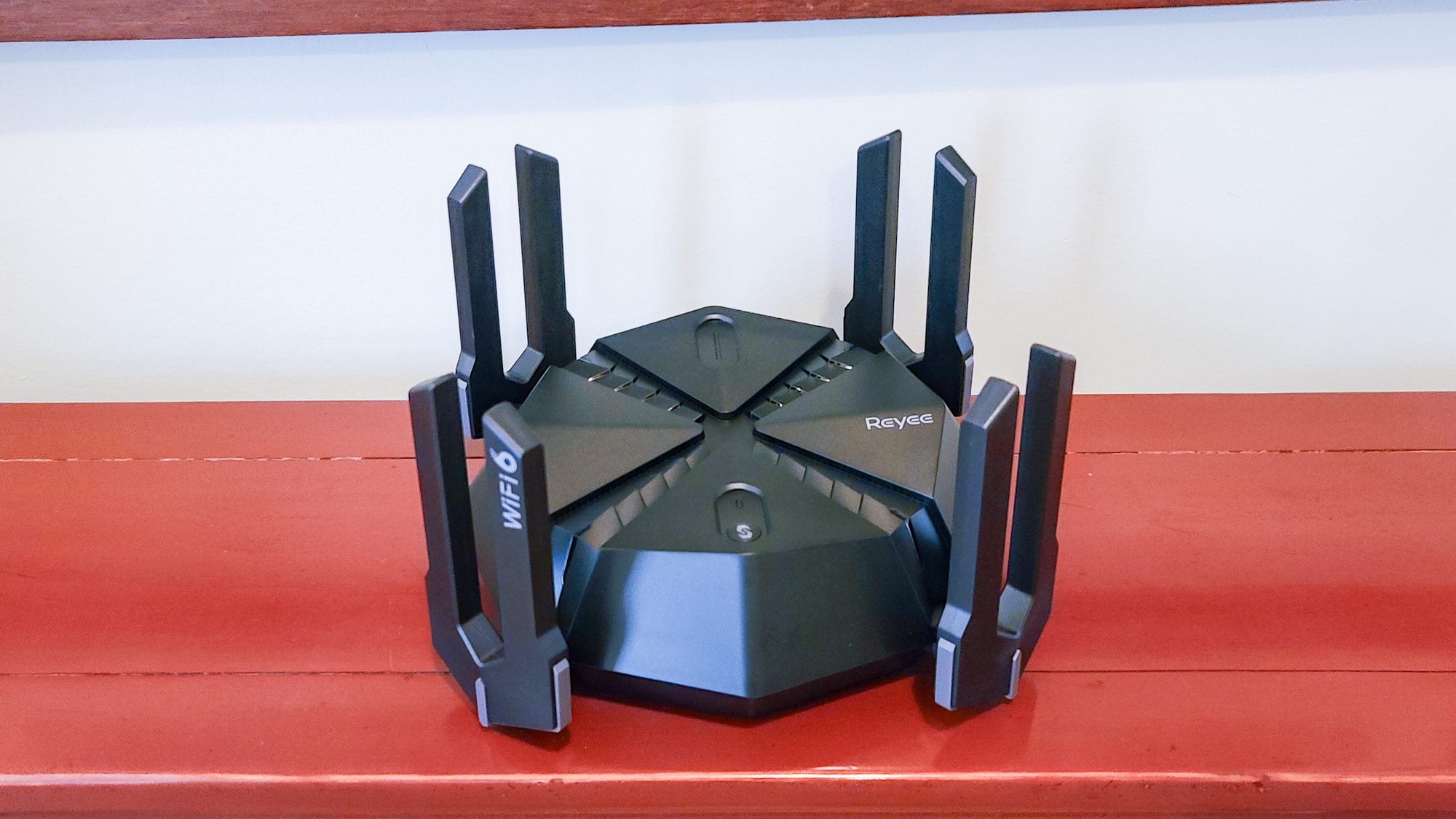
Specifications
Reasons to buy
Reasons to avoid
✅ You’re on a tight budget: At under $150, the Reyee RG-E6 is a very affordable gaming router with Wi-Fi 6 and a 2.5G input port.
✅ You have multi-gig internet: With a 2.5G input port and a multi-gig internet plan, you’ll have more than enough bandwidth for all your devices.
❌You want the latest Wi-Fi tech: As this is a Wi-Fi 6 router, you won’t have access to the faster 6 GHz band found in Wi-Fi 6E and most Wi-Fi 7 routers. Plus you’ll miss out on other new features.
❌You need fast wired connections: The Reyee RG-E6 has a 2.5G input port but all of its downstream Ethernet ports are limited to gigabit speeds.
The Reyee RG-E6 is a Wi-Fi 6-powered gaming router that won’t break the bank but still comes with plenty of features and of course, a dedicated gaming port. While it might not have built-in RGB lighting, it does sport a futuristic design that will complement any game room or battlestation. At just $150, the Reyee RG-E6 will leave you with plenty of room in your budget for new games and peripherals.
Although it’s priced like a budget router, the Reyee RG-E6 pushes Wi-Fi 6 to its limit while its eight high-powered antennas offer improved wall penetration and a stronger signal between rooms. At 10.2 x 10.2 x 6.2 inches, this gaming router is on the larger side but these external antennas are one of the reasons behind its larger footprint. Even without the latest wireless tech on board, the Reyee RG-E6 still managed to reach speeds of 1.148 Gbps at a distance of 15 feet which isn’t too far off the much more expensive Archer GE800’s 1.322 Gbps. In our testing, it had a total range of 95 feet but if you need even more coverage, you can easily build a mesh network around this gaming router. To do so, you just need some additional Reyee gear and with a push of the mesh button on the top of the device, this gaming router becomes the main device in a mesh network.
One area where the Reyee RG-E6 does fall short is with extras. You don’t get built-in security software like you do with the GE800 and there isn’t a USB port around back for sharing data across your home network. Still though, you do get a 2.5G input port for multi-gig internet and four downstream gigabit Ethernet ports for your wired devices. One of these is a dedicated gaming port designed to give you lower latency while playing online.
For not much more than the price of two games, the Reyee RG-E6 is a very affordable, though sleek, gaming router that more than gets the job done on a budget. It’s best suited to small homes and apartments but since you also have the option to build a mesh network around it if you notice some Wi-Fi dead zones around your home. You are missing out on the faster 6 GHz band you get with Wi-Fi 6E and Wi-Fi 7 gaming routers but at this price, can you really complain.
Read our full Reyee RG-E6 review.
Best Wi-Fi 6e
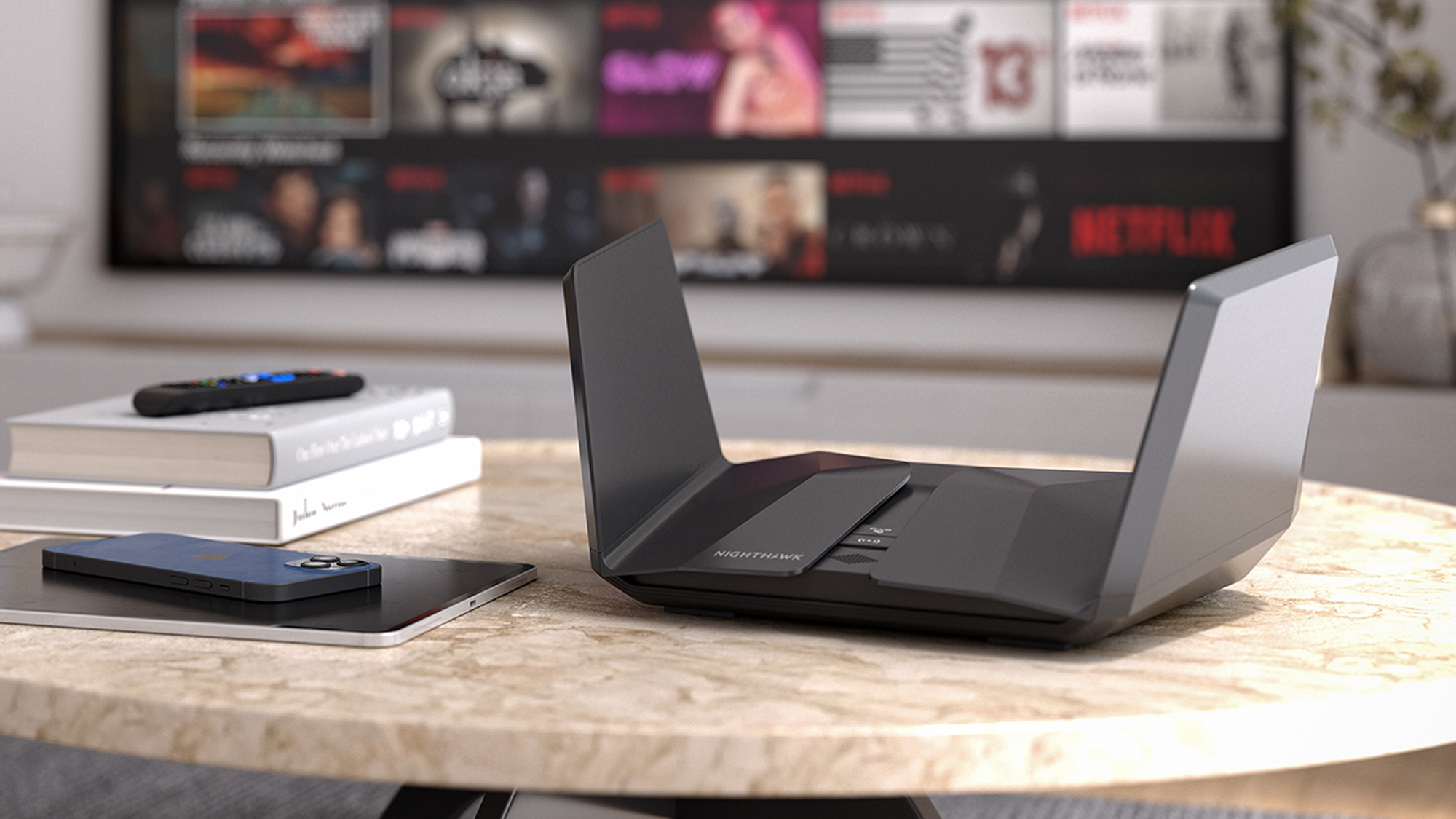
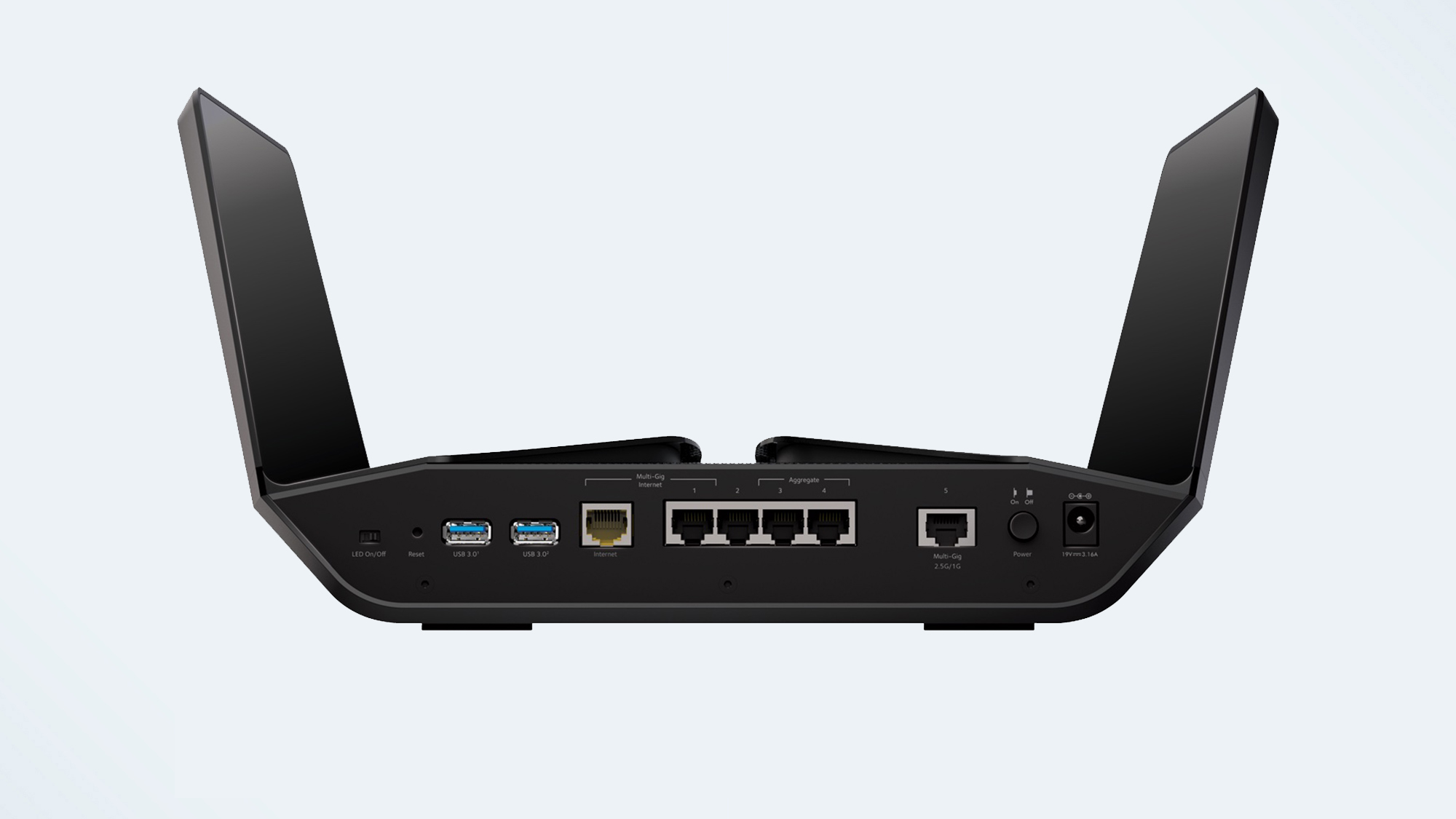
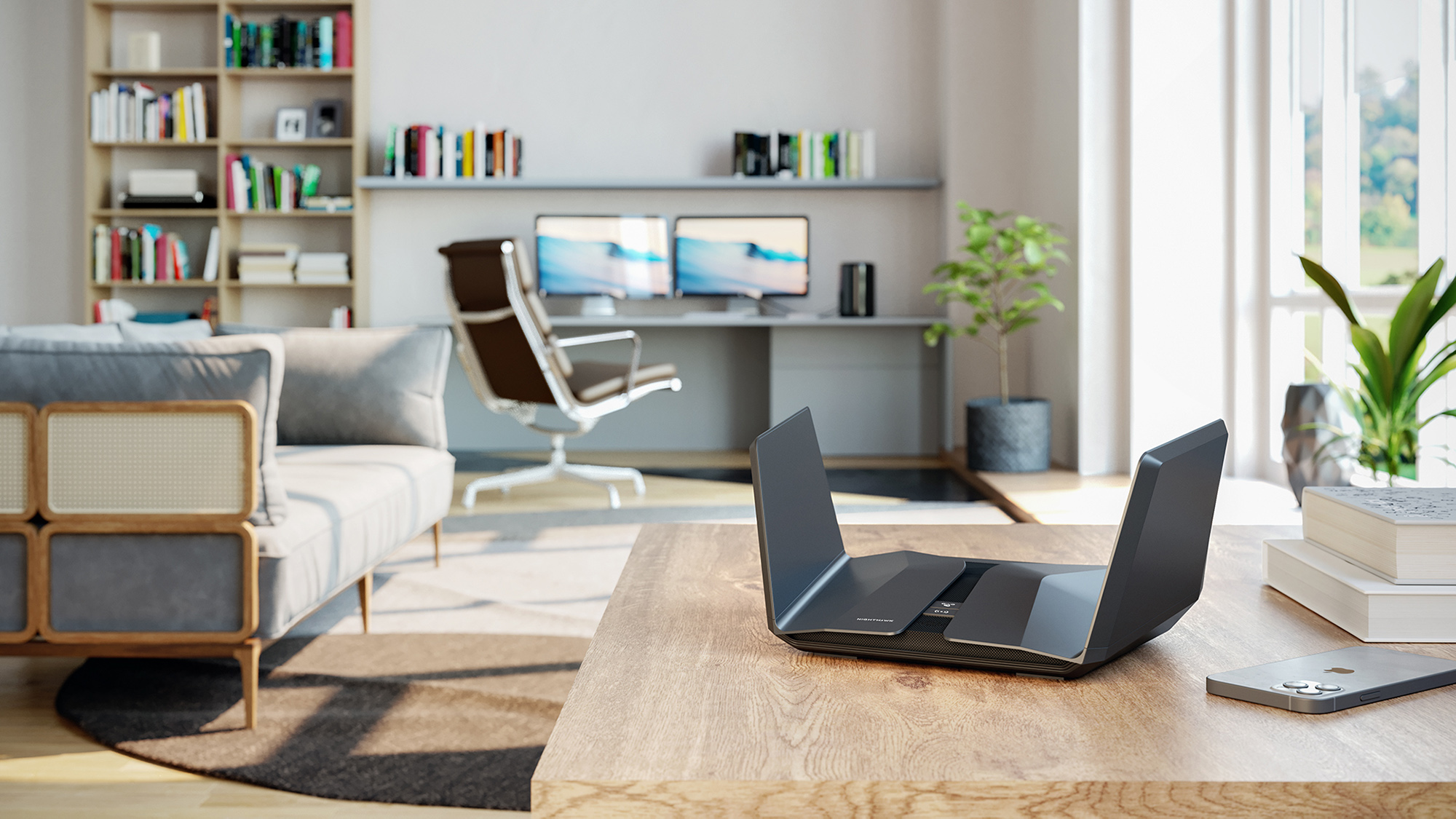
Specifications
Reasons to buy
Reasons to avoid
✅ You want a router that stands out: With its unique fin-shaped design, the Netgear RAXE500 doesn’t look like your typical Wi-Fi router.
✅ You want a customizable router: Netgear makes it very easy to customize this router to your liking using either its app or your browser.
❌ You don’t have multi-gig internet: The 2.5 Gbps Ethernet port at the back of this router is better suited to faster, multi-gig internet plans.
❌ You don’t want to pay for security software: Unlike others, Netgear charges annually for its Armor security software.
The Netgear Nighthawk RAXE500 was the first Wi-Fi 6e router to hit the market, and the results are mind-blowing. By adding the new 6-GHz band to the already impressive capabilities of Wi-Fi 6, the Nighthawk RAXE500 delivers category-leading performance — but at $599, it's not cheap.
This tri-band device more than lives up to the hype by delivering 2.39 Gbps at 15 feet during our testing. Add this to the slick design and highly customizable configuration options, and the Netgear Nighthawk RAXE500 becomes one of the best wireless routers we've ever reviewed. While it’s best at close quarters and is one of the more expensive routers on this list, the RAXE500 is worth every penny if you have the need for speed.
Our Netgear coupon codes can help you save on premium Wi-Fi and networking products. Use our promo codes to get discounts on Netgear routers, extenders, and other networking gear.
Read our full Netgear Nighthawk RAXE500 review.
Best Wi-Fi 7
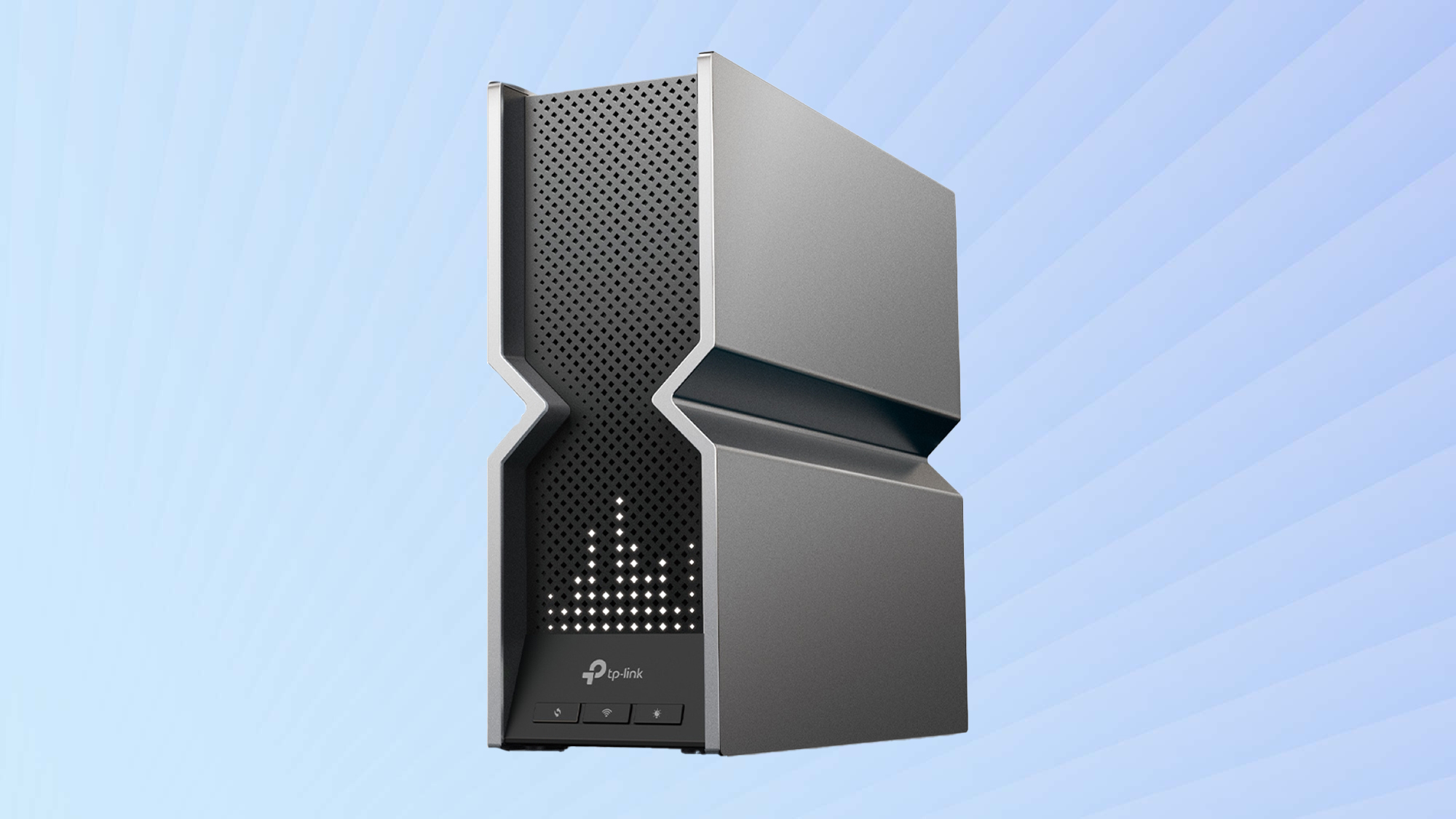
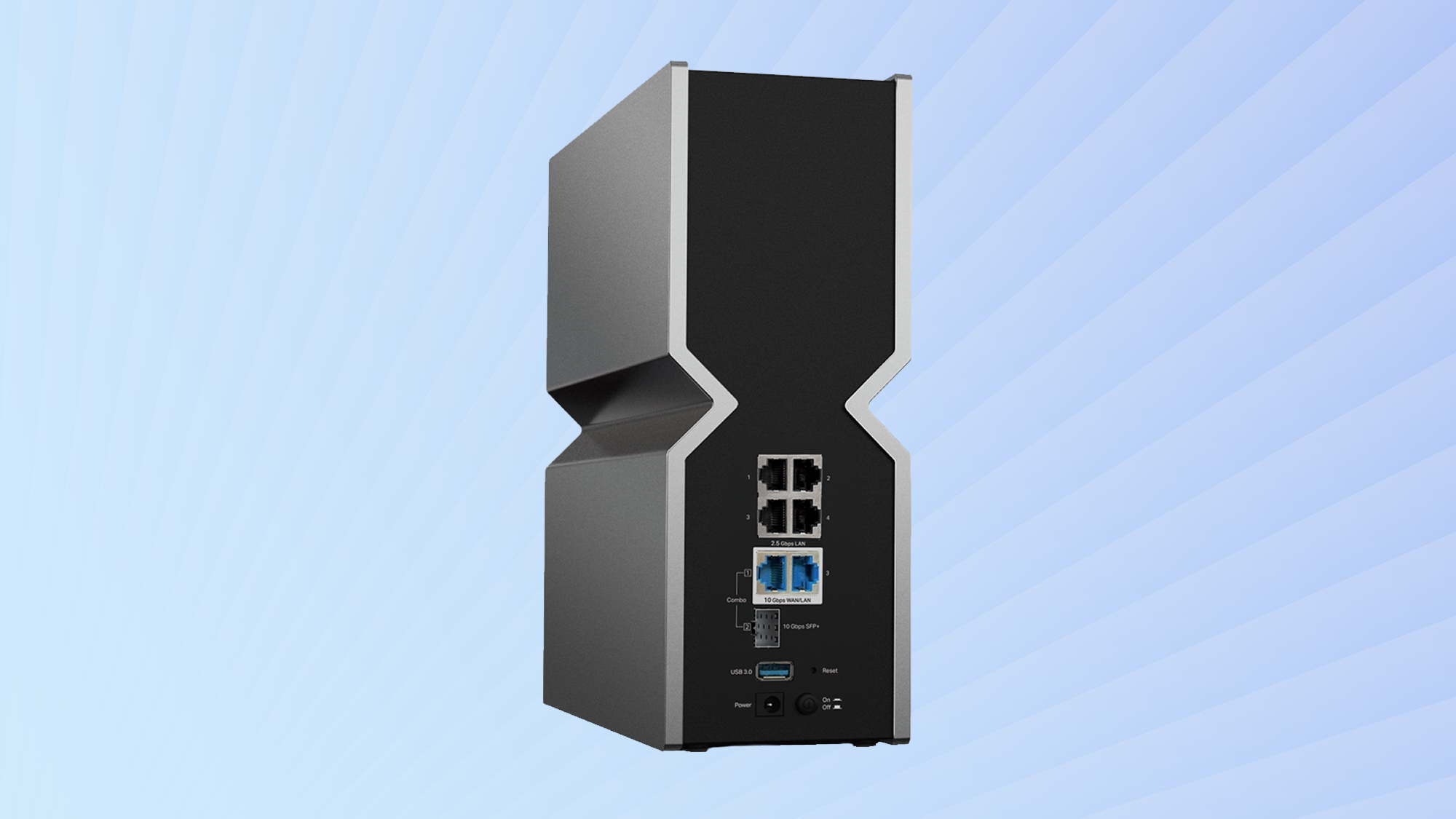
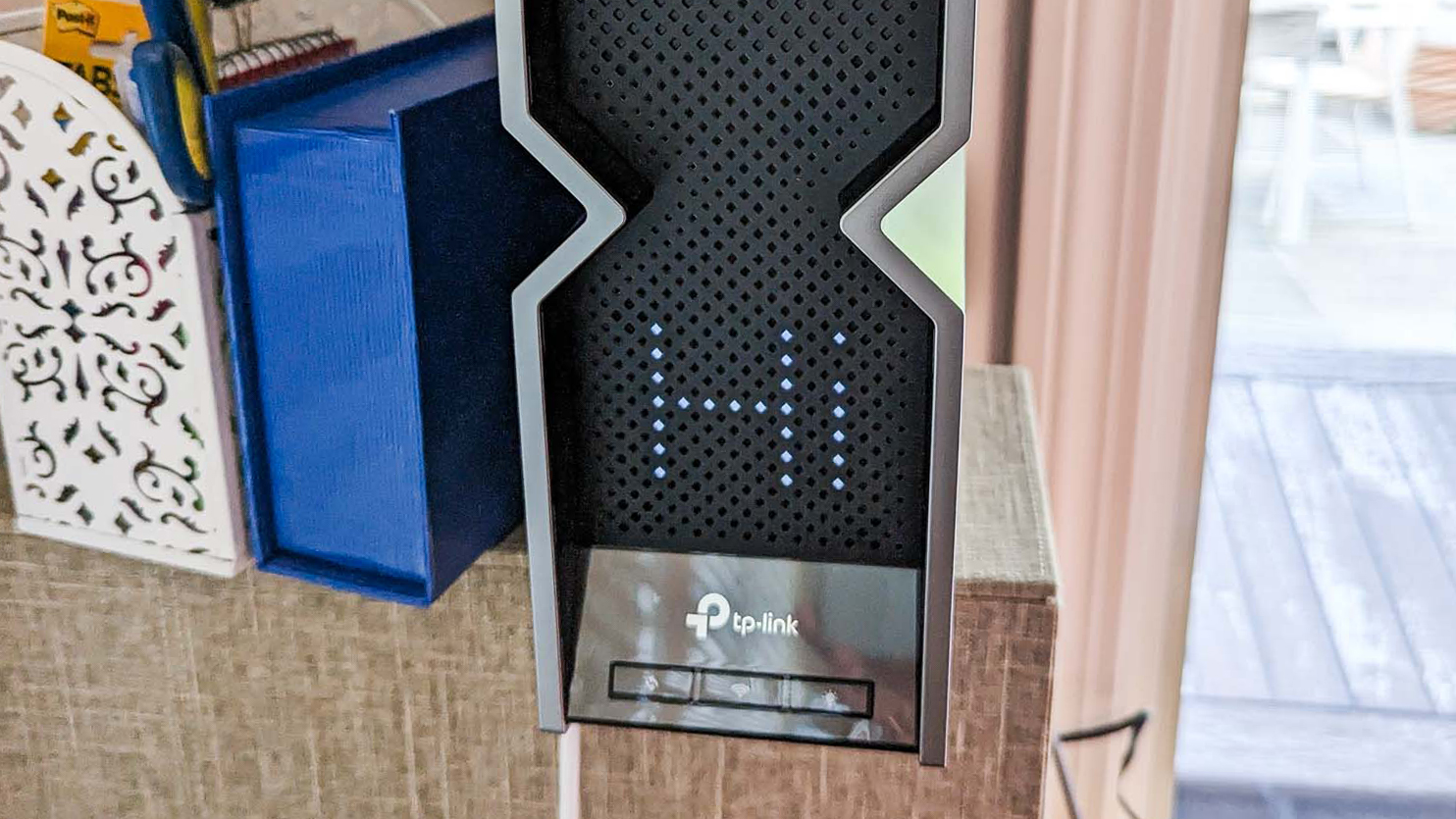
Specifications
Reasons to buy
Reasons to avoid
✅ You want a router with a unique design: With its brand new, hourglass design, the Archer BE800 looks unlike any other router we’ve seen before.
✅ You want to have your router out in the open: As the Archer BE800 has a unique dot display that can show the time, weather and more, this is the kind of router you’re going to want to have front and center instead of hiding it on a bookshelf.
❌ You’re short on space: At 11.9 x 10.3 x 3.8-inches, this is a rather large and quite tall router that can be a bit bulkier when compared to traditional router designs.
❌ You’re on a tight budget: The Archer BE800 costs $600 which is more than many are willing to spend on a router.
The TP-Link Archer BE800 is unlike any Wi-Fi router we've seen before thanks to its new V-Fold design language. Unlike other routers you'll want to tuck away, this is one you're going to want to have out in the open, especially as its 2.4-inch, big dot display can show everything from the date and time to the weather and even custom animations.
Besides its looks, the Archer BE800 is relatively affordable for a powerful, Wi-Fi 7 router at $599. However, if that's out of your budget, check out the cheaper Archer BE550 for just $300. There's also the more expensive Archer BE900 with dual displays.
At the back of the Archer BE800, you'll find two 10 gigabit Ethernet ports, four 2.5 gigabit ports and a USB 3.0 port. In our testing, the Archer BE800 was able to reach speeds of 1.8 Gbps at 15 feet with a maximum range of 115 feet. If you're tired of your boring old Wi-Fi router and want to upgrade to the latest wireless standard, then the Archer BE800 just might be for you.
Read our full Archer BE800 review.
Best long-range router
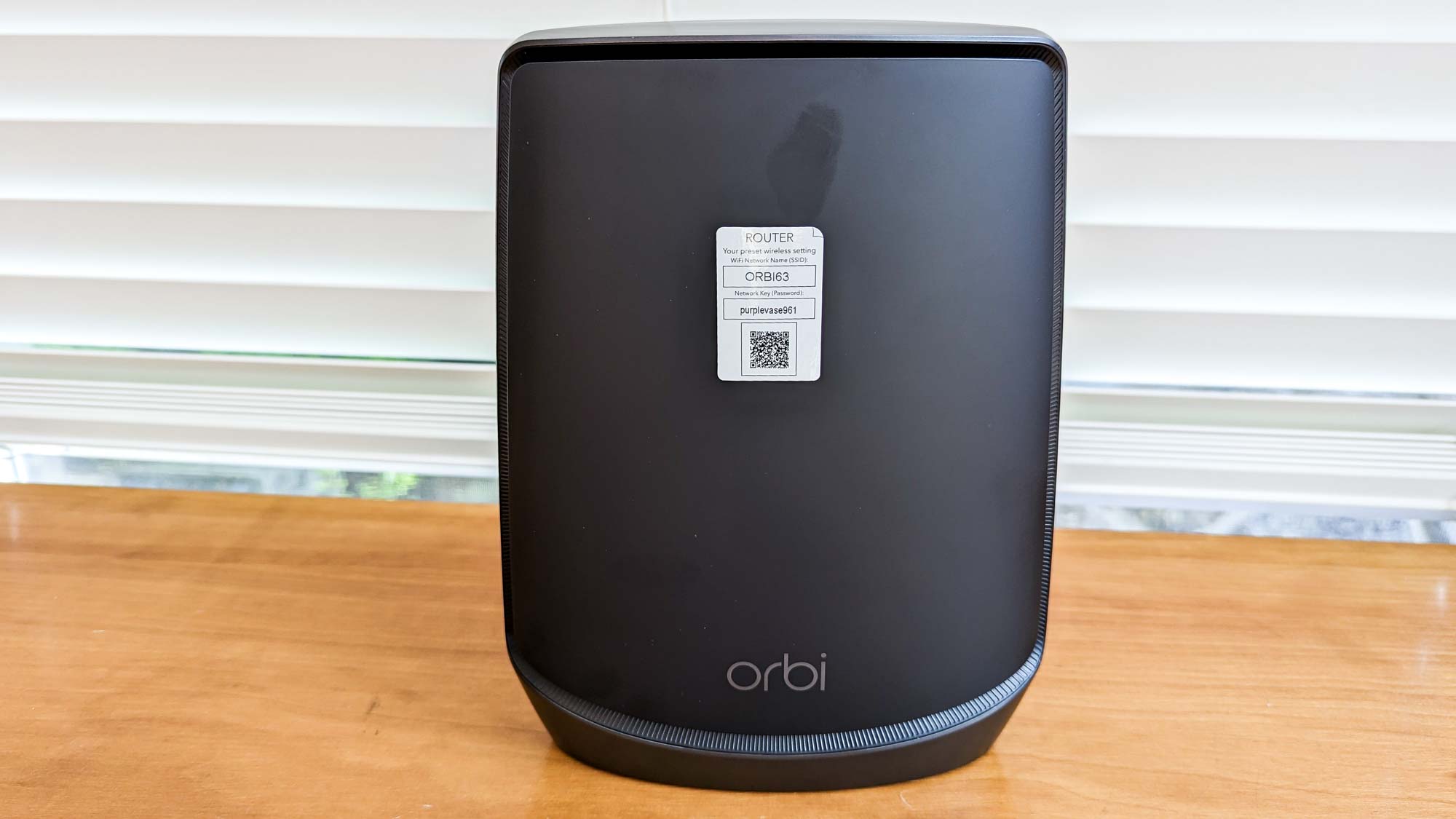
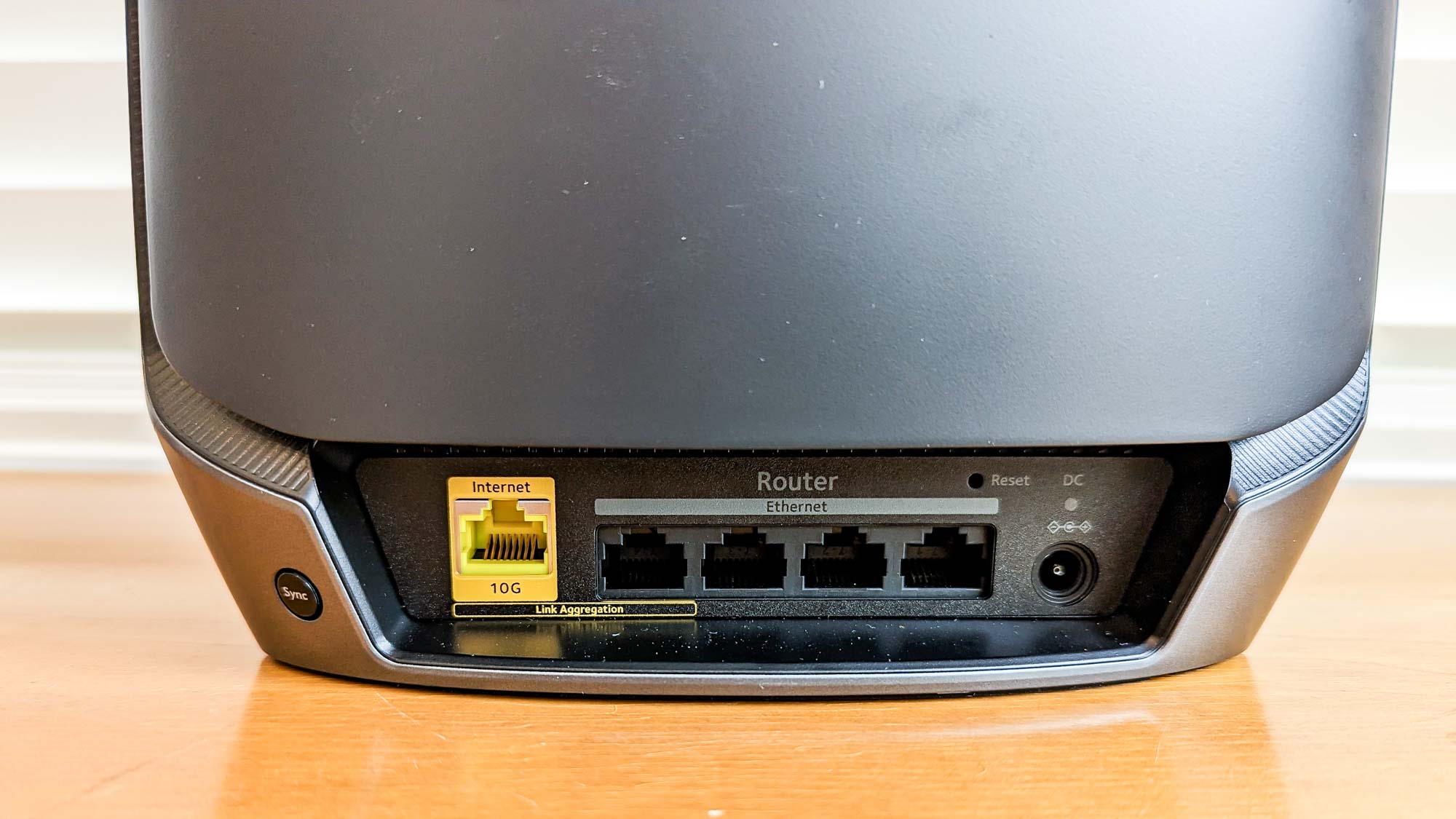
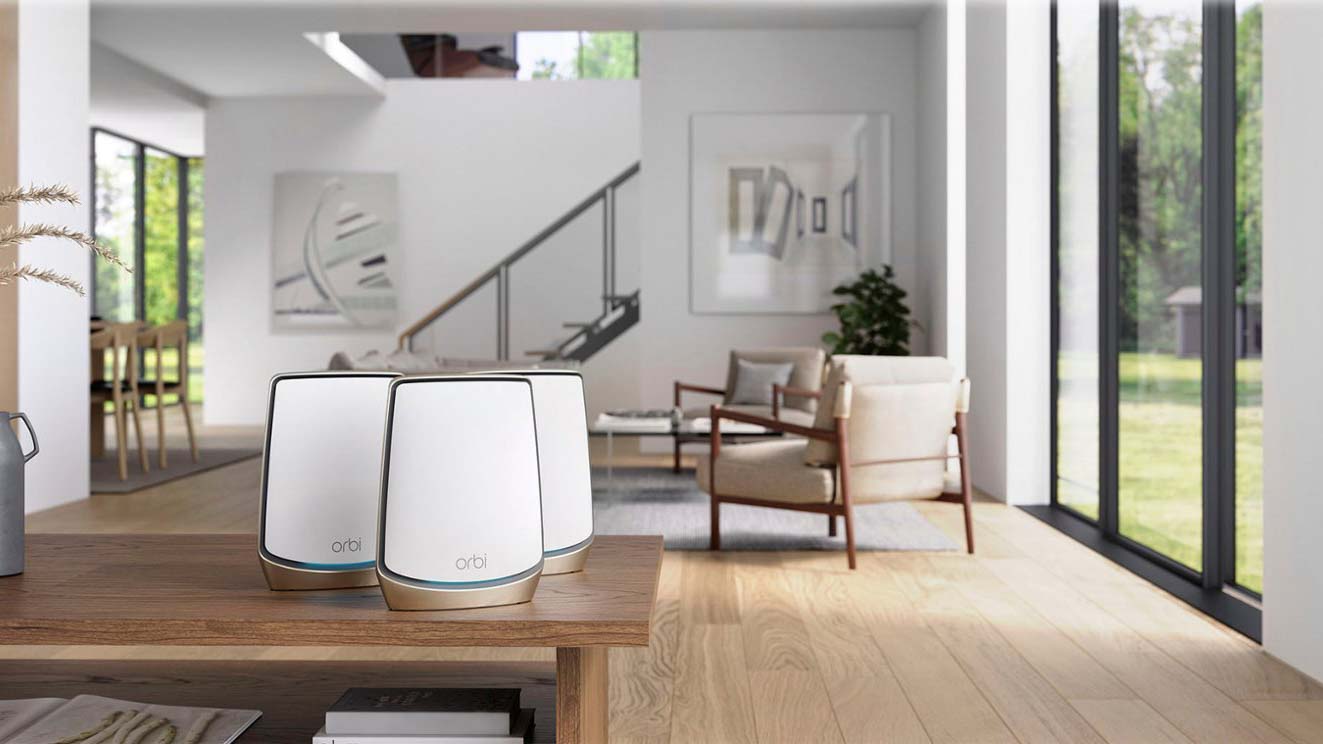
Specifications
Reasons to buy
Reasons to avoid
✅ You have a big home: With a range of 105 feet, the Orbi RBK863SB is a great choice for larger homes.
✅ You have a lot of smart home devices: Netgear lets you create a separate network for your smart home devices with this mesh Wi-Fi system.
❌ You’re on a budget: Netgear’s Orbi devices are far from cheap and a two-piece RBK863SB kit come in at $800.
❌ You want something you can set up quickly: This mesh Wi-Fi system took 17 minutes for someone very experienced with networking to set up.
The Netgear Orbi RBK863SB is a tri-band, Wi-Fi 6 mesh router that builds on the company's Orbi RBK852 with improved performance and a brand new, all-black color scheme (it's also available in white) sold exclusively on its site. Also, by using an innovative new antenna design, it has even better mid-range performance with download speeds that are four times faster than its predecessor at 50 feet. Like other Orbi devices though, you're paying a premium but for the price, you get excellent performance and plenty of ports.
With a three-pack, the Orbi RBK863SB can cover up to 8,000 square feet with a strong Wi-Fi signal but there's also a four-pack that covers 10,000 square feet — perfect for very large homes. In our testing, the Orbi RBK863SB delivered speeds of 806 Mbps at 15 feet and each unit had a range of 105 feet.
At the back of the main unit that serves as the router, you'll find a 10 Gigabit Ethernet port along with four gigabit Ethernet ports while the satellites only have these four gigabit Ethernet ports. With your purchase, you also get access to Netgear's built-in Armor security software for free for one year but after that, it costs $100 annually. If you have a large home you need to fill with a strong Wi-Fi signal but don't want to pony up the extra cash for the Wi-Fi 7-equipped Orbi RBE973, the Orbi RBK863SB is a great option and looks stunning in black.
Read our full Netgear Orbi RBK863SB review.
Best for large homes
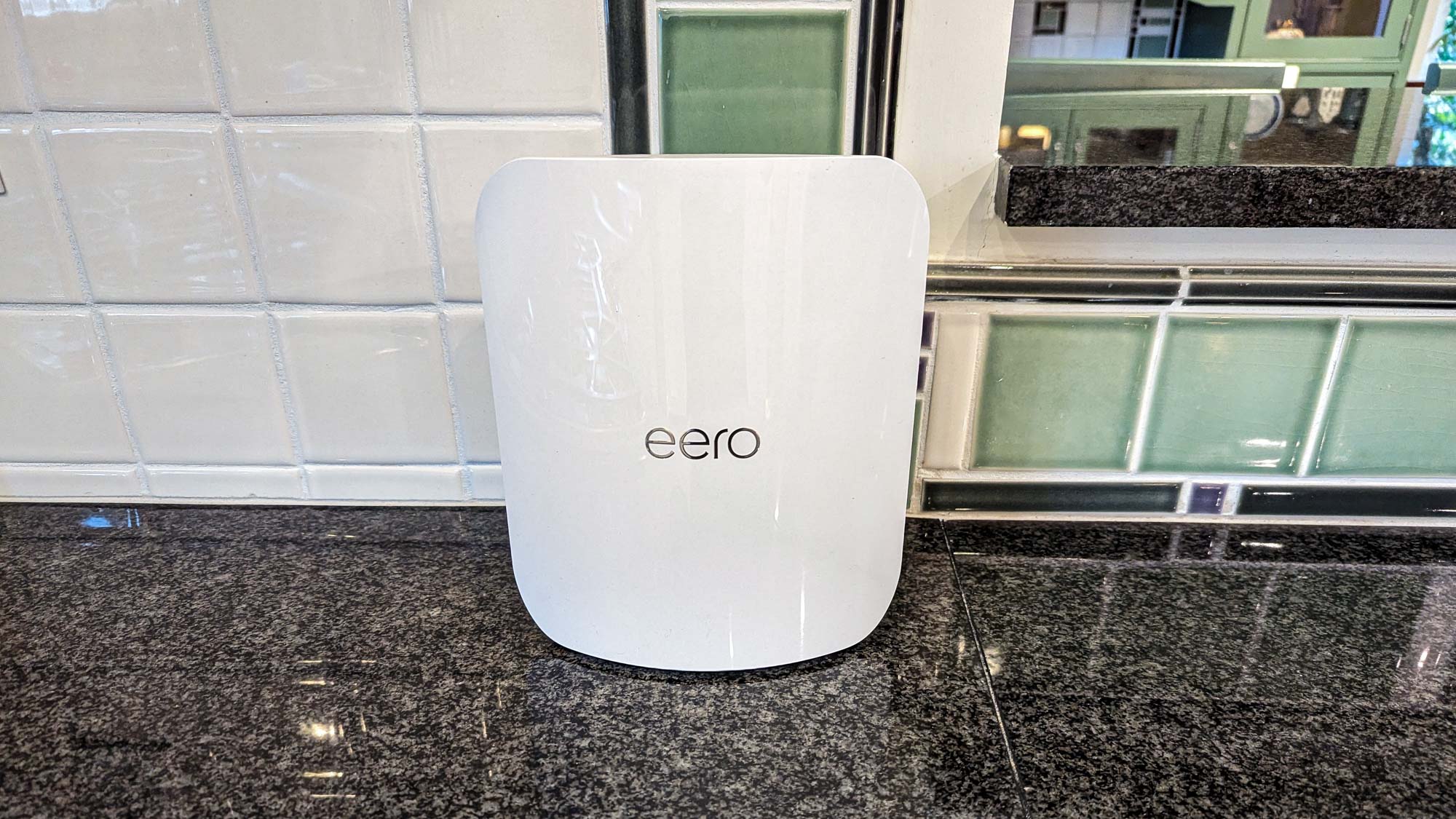
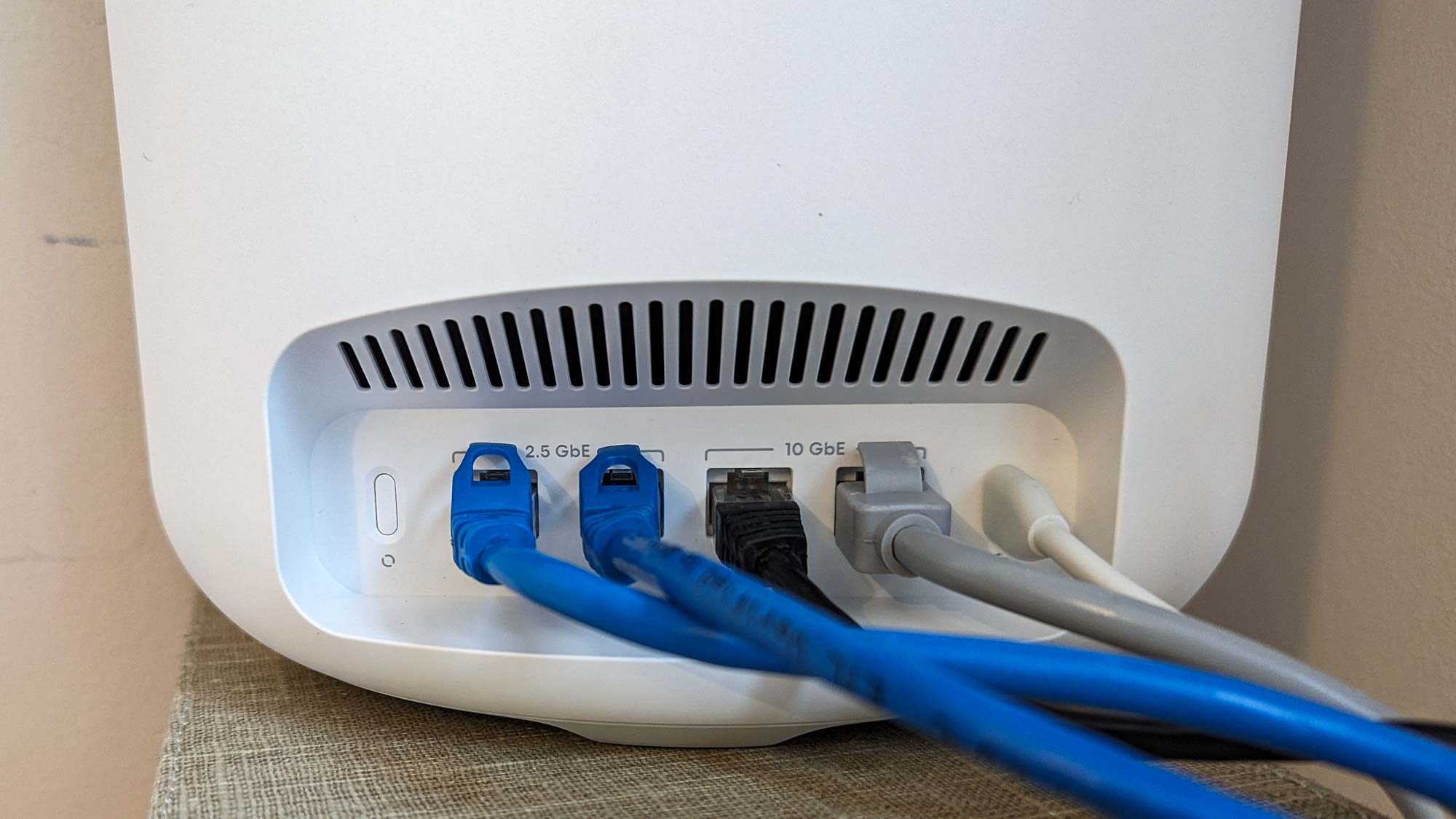
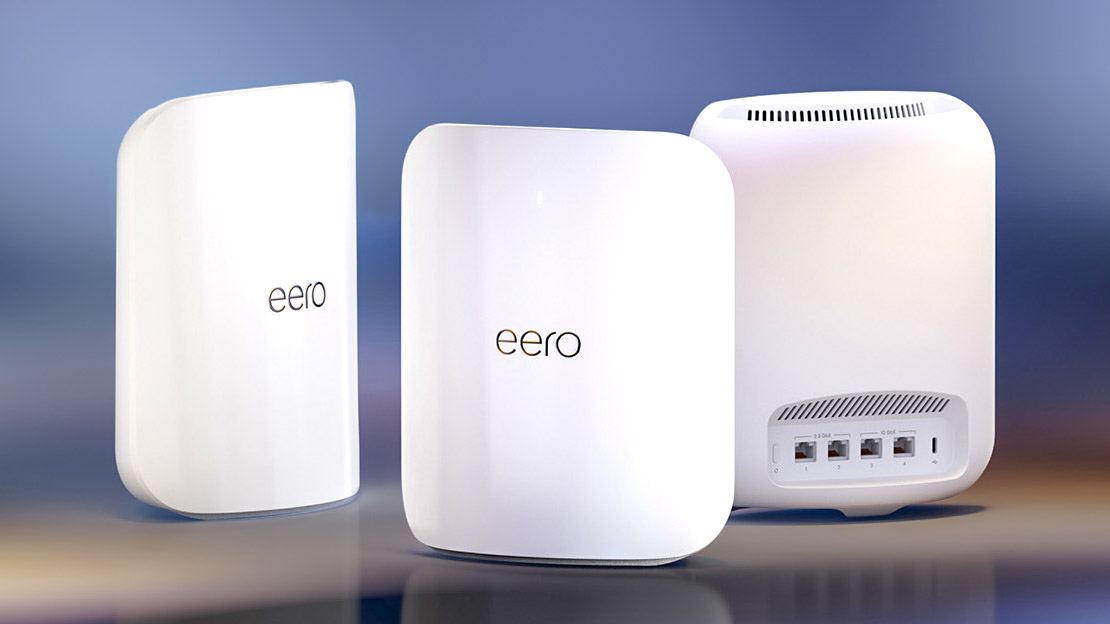
Specifications
Reasons to buy
Reasons to avoid
✅ You want a hassle-free Wi-Fi 7 mesh network: Eero’s mesh routers are simple to setup and easy to troubleshoot when you run into problems.
✅ You have multi-gig internet: With a 10 Gbps and a 2.5 Gbps Ethernet port, this mesh kit is ideal for those with faster internet plans.
❌You’re on a budget: The eero Max 7 is eero’s first Wi-Fi 7 mesh router and its flagship product, so it’s quite expensive at over $1,500 for a three-piece kit.
❌ You need the best Wi-Fi 7 performance possible: In our speed tests, performance fell off quickly at a distance which is less than ideal for such an expensive mesh Wi-Fi system.
The eero Max 7 is Amazon's first mesh Wi-Fi system with Wi-Fi 7 and unlike its predecessor the eero Pro 6E, it has a brand-new design. Sure, these new devices are larger but this is because they have 10 antennas as opposed to just 6 as well as more ports at the back. There's also been a significant price increase with a three-pack selling for $1,700 but the best Wi-Fi 7 routers — and especially mesh ones — all cost a bit more since they're using the latest and greatest wireless standard.
One of the best things about eero devices is that they are all compatible with one another which means you can use your old eero mesh router to extend your network further. At the same time, you can also use an Echo Dot as a mesh extender when you need more range in a pinch.
At the back of the eero Max 7, you'll find two, 10 gigabit Ethernet ports, two 2.5 gigabit Ethernet ports and a USB-C port for power. In our testing, the eero Max 7 delivered speeds of 1.781 Gbps at 15 feet and had a range of 95 feet. As always, we were impressed by how simple the set up procedure was and just how much we could do from the eero app, especially with an optional eero Plus subscription.
Read our full eero Max 7 review.
Router specs
| Wi-Fi Router | Wi-Fi | Wi-Fi Spec | Ports | Size (LWH) |
|---|---|---|---|---|
| Asus RT-BE96U | Wi-Fi 7 | BE19000 | 2 x 10 Gbps WAN/LAN, 1 x SFP+ optical port, 4 x 2.5 Gbps LAN, 1 x USB 3.0 | 11.5 x 9.0 x 7.4 inches |
| TP-Link Archer AX55 | Wi-Fi 6 | AX3000 | 1 x gigabit WAN, 4 x gigabit LAN, 1 x USB 3.0 | 10.2 x 5.3 x 1.5 inches |
| Netgear Orbi RBE973 | Wi-Fi 7 | BE27000 | 1 x 10 Gbps WAN, 1 x 10 Gbps and 4 2.4 Gbps LAN (router), 1 x 10 Gbps and 2 x 2.5 Gbps LAN (satellites) | 11.4 x 5.5 x 5.1 inches |
| TP-Link Deco X20 | Wi-Fi 6 | AX1800 | 1 x gigabit WAN/LAN, 1 x gigabit LAN | 4.3 x 4.3 x 4.5 inches |
| TP-Link Archer GE800 | Wi-Fi 7 | BE19000 | 1 x gigabit WAN, 1 x 2.5 Gbps WAN/LAN, 4 x gigabit LAN, 2 x USB 3.2 | 9.4 x 9.4 x 2.8 inches |
| Reyee RG-E6 | Wi-Fi 6 | AX6000 | 1 x 2.5 Gbps WAN, 4 x gigabit LAN | 10.2 x 10.2 x 6.2 inches |
| Netgear Nighthawk RAXE300 | Wi-Fi 6E | AXE11000 | 1 x gigabit WAN/LAN, 1 x 2.5 Gbps WAN/LAN, 4 x gigabit LAN, 2 x USB 3.0 | 12.0 x 8.6 x 7.3 inches |
| TP-Link Archer BE800 | Wi-Fi 7 | BE19000 | 2 x 10 Gbps WAN, SFP+ fiber port, 4 x 2.5 Gbps LAN, 1 x USB 3.0 | 11.9 x 10.3 x 3.8 inches |
| Netgear Orbi RBK863SB | Wi-Fi 6 | AX6000 | 1 x 10 Gbps WAN, 4 x gigabit LAN | 10.0 x 7.5 x 2.8 inches |
| Eero Max 7 | Wi-Fi 7 | BE4300 | 2 x 10 Gbps WAN/LAN, 2 x 2.5 Gbps WAN/LAN | 8.4 x 7.1 x 3.4 inches |
Testing results
When to update your router
Maybe you’ve noticed that your current Wi-Fi coverage feels slower than it used to, have been experiencing spotty reception, or maybe you just need something better equipped to handle the demands of the growing number of smart home devices at your house. If you’ve been dealing with any of these issues, a new router should be able to fix these common problems.
It’s also worth upgrading to a new Wi-Fi router if you’re still using older hardware. If you have an old Wireless-N or Wireless-AC (retroactively renamed Wi-Fi 4 and Wi-Fi 5 respectively) router in your home, you should definitely consider upgrading to something more current. Newer standards will not only provide faster connectivity but there are other benefits as well. For instance, your smartphone battery will last longer as a result of more efficient device management and your connected home gadgets will all feel much faster with these more capable standards.
The other big reason to upgrade your router is that you’re tired of paying a monthly rental fee for a router from your ISP. Since average equipment rental fees cost anywhere from $10-15 each mount, a new router can pay for itself in just a short amount of time while providing you with better service and features. Just don’t forget to pair it with one of the best cable modems if you want to entirely free yourself from the extra costs that often come with broadband internet packages.
How to choose the best Wi-Fi router for you
When it comes to choosing the best wireless router for your home or small business, it’s easy to get lost in the complex networking jargon and obscure technology standards. However, all you really need to know is how to answer two key questions: What speed do you need for your internet connection? And what sort of coverage do you need?
Speeds and standards: The internet speed you need for your router is determined by the speed you get from your internet service provider as well as the speeds supported by your modem. For most people, a standard 802.11ac router will handle all but the highest performing plans, like Gigabit internet plans that aren’t available everywhere just yet. With average broadband speeds at around 100 Mbps, most wireless AC routers will be able to handle the job with ease.
The latest technology for routers is called Wi-Fi 6 (aka 802.11ax) which is a faster standard that’s better suited for households with a lot of smart home devices. There are many Wi-Fi 6 routers available today, though there’s an even newer twist on this standard called Wi-Fi 6e that takes advantage of a newly opened part of the radio spectrum.
Wi-Fi 6e-enabled devices, such as laptops and smartphones, are still few and far between. Unless you’re using a dozen devices at once, you likely won’t see much benefit from upgrading to Wi-Fi 6e at this time. See our article What is Wi-Fi 6E: Routers, devices and how it's better than Wi-Fi 6 to learn more.
Coverage range: The other part of the wireless equation is coverage area. A basic standalone router will generally offer 50 to 100 feet of range, so that it can easily cover the majority of apartments and smaller homes. If you have a house with 3,000 square feet or more of space, you’ll want to consider a mesh router instead which use multiple devices to provide a strong Wi-Fi signal throughout larger homes. These are especially helpful in multistory houses or in homes with dead spots where the Wi-Fi signal drops out.
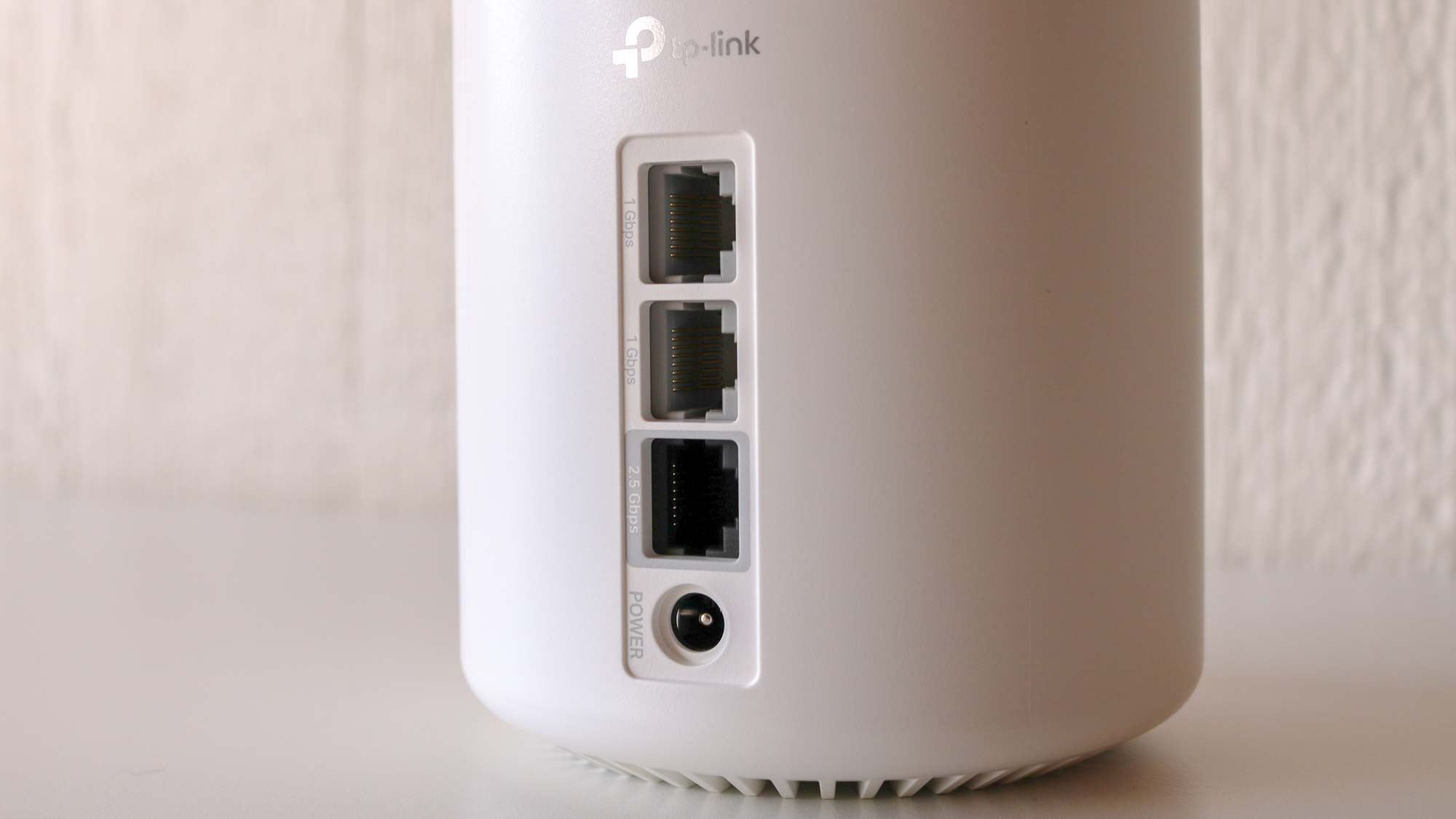
Ports: Though wireless connectivity is the main thing you want from a Wi-Fi router, you’ll also want to think about wired connections. Ethernet offers faster connectivity for devices like game consoles and smart TVs that use more bandwidth and USB ports are handy for connecting older printers or storage to your network.
Input is another issue, especially if you live in an area where Gigabit internet is available. With a Gigabit connection, an older router can be a bottleneck, slowing down your entire home. Some routers can even aggregate two inputs for even faster connectivity.
Price range: Current 802.11 ac routers often sell for less than $100 for basic, dual-band models. More expensive modems range up to $300 but offer better coverage and faster speeds, while gaming routers have built-in optimization features and typically sell for more. New routers using the Wi-Fi 6 standard (previously known as 802.11 ax) often cost $400 or more.
Keeping up on everything happening in the networking world can be difficult, so check out our helpful guides on the latest technology, like What is a mesh Wi-Fi router, and do you need one? Or get the latest advice on how to fix your router's security problems, from simple steps to advanced protections. From router security to in-depth explanations of Wi-Fi 6 and Wi-Fi 6e, we're always providing the latest info about the newest products and innovations.
Regular router vs mesh router
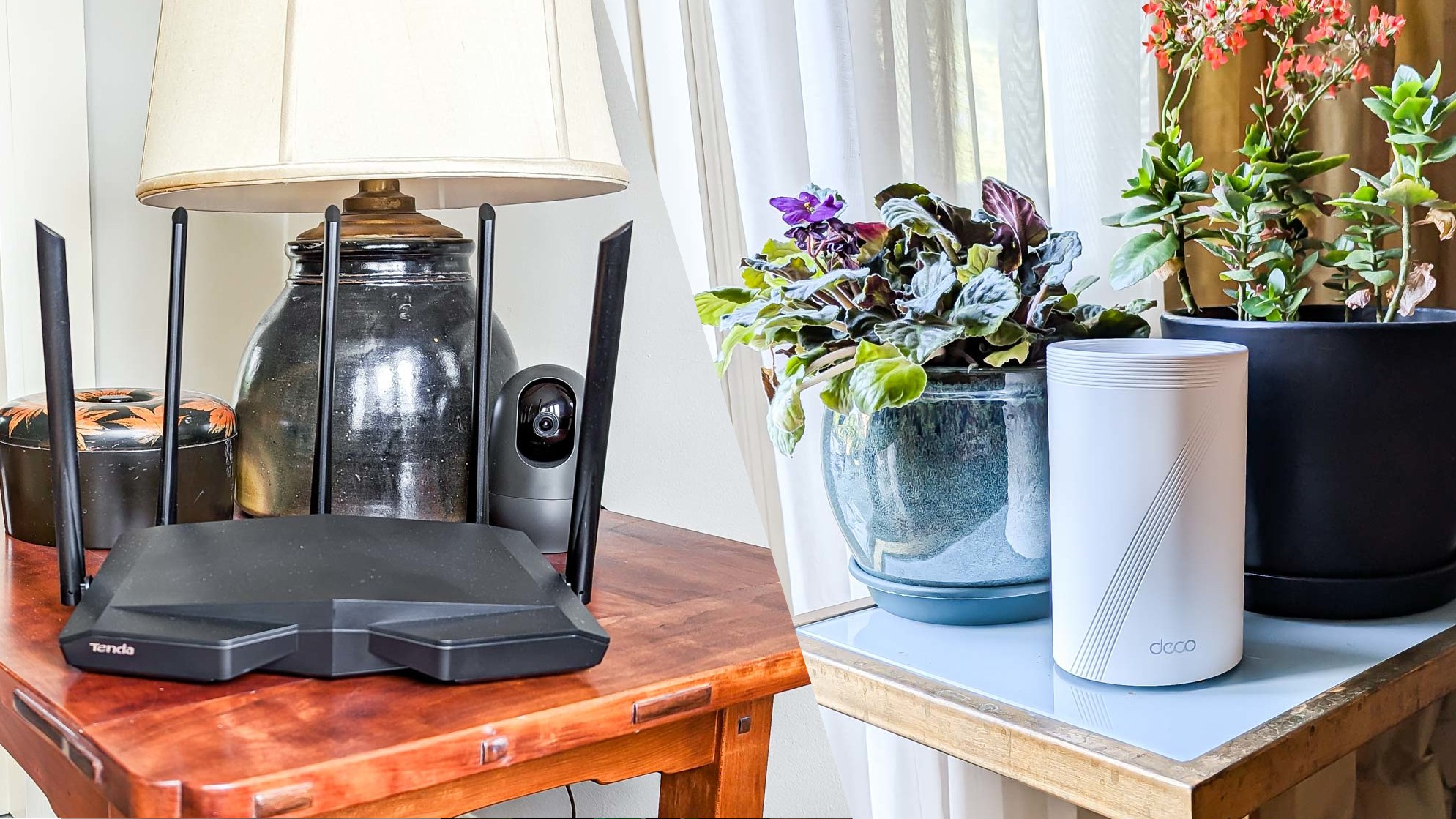
Upgrading your home network is a bit more complicated than it used to be as you now have one big decision to make before buying a new router: do you get a traditional Wi-Fi router or a mesh Wi-Fi system? There are pros and cons to both but the best one for you will largely depend on your home’s layout and whether or not you have Wi-Fi dead zones in certain rooms or areas.
If you live in a large home or one with an odd shaped layout, then a mesh router is most likely your best option. Unlike with a traditional Wi-Fi router, a mesh Wi-Fi system is made up of several devices (typically two or three) and while one unit acts as your main router, the rest act as satellites. These satellites spread your Wi-Fi signal even further, giving you better coverage and eliminating dead spots.
With a traditional router, you just have one device that plugs into your cable modem or your Optical Network Terminal if you have fiber internet. It then broadcasts a Wi-Fi signal in an elliptical shape that’s perpendicular to its antennas. You can extend your router’s signal even further but do so, you’ll need a Wi-Fi extender. Some companies like TP-Link even sell Wi-Fi extenders that can turn a regular router into a mesh one.
To keep things simple though, if you have Wi-Fi dead spots or want to extend your home internet all the way out into the backyard, a mesh router is the better choice. Fortunately, they’ve come down significantly in price over the years and you can now pick up a decent Wi-Fi 6-powered system for less than $200.
Now if you live in an apartment or a smaller house, you might not need a mesh router. Instead, you want to look for a Wi-Fi router with decent range and repositionable antennas you can adjust to tweak where its signal goes.
The choice is yours but there is another option worth considering too. You can buy a single mesh router now and buy satellites later on. A mesh router will work as a traditional Wi-Fi router on its own and its coverage is good enough for you, there’s nothing to worry about but at least you have a backup plan if you do notice Wi-Fi dead spots later on.
What’s the best place to put your router?
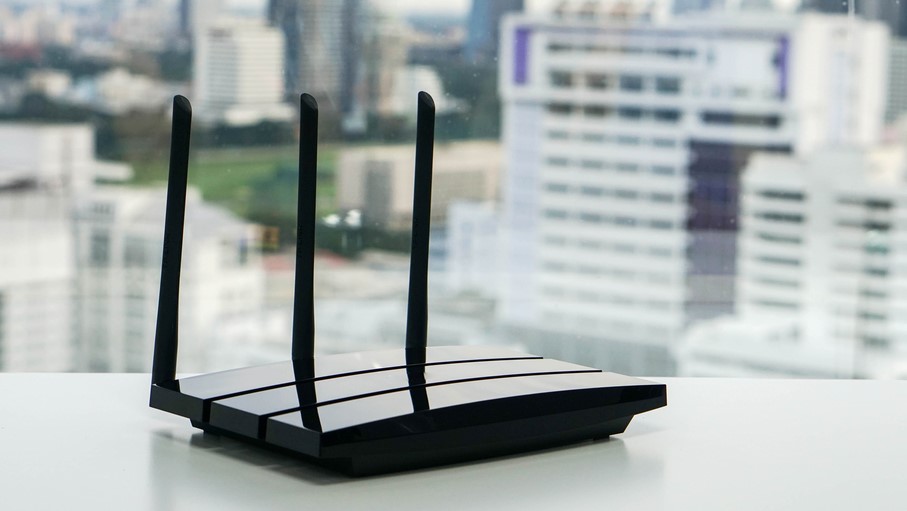
Back before Wi-Fi was a thing, you’d often see routers tucked under desks or hidden away out of sight. Since they were used solely for wired connections, this wasn’t a problem at all. Now though, since you have the option of using either a wired or wireless connection, router placement is more important than ever.
In order to get the best Wi-Fi signal out of your router, it needs to be in a central location as opposed to in a closet, a basement or in your attic. Living rooms, dining rooms or family rooms are all popular places to put your router but you will need to be close to where your cable or fiber connection comes into your house. If you go with a mesh router instead, this won’t be a problem since you have several satellites in addition to the unit that acts as the main router spread throughout your home.
From here, you want your Wi-Fi router to be elevated since its signal goes up and out. On top of a book shelf, a table, on a wall or even mounted to the ceiling are all good options. With most popular routers, you can often find mounting brackets online but if you live in an apartment or rent your home, a tall bookshelf is probably your best bet. However, you don’t want your router so high up in case you need to unplug it to reset it. You can use one of the best smart plugs for this in a pinch though.
The next thing you need to keep in mind is obstructions. Walls, large metal objects and big appliances like your refrigerator or stove can all introduce interference that can degrade your router’s signal. This is why living rooms, dining rooms and family rooms are all good options since they’re a fair distance away from any large appliances.
Finally, if your router’s current location isn’t working, you can always move it somewhere else. If you do though, make sure to use one of the best speed tests apps and run several tests to see if moving it actually made a difference. If it didn’t, it might be time to upgrade either your router or your current internet plan.
How we test the best Wi-Fi routers
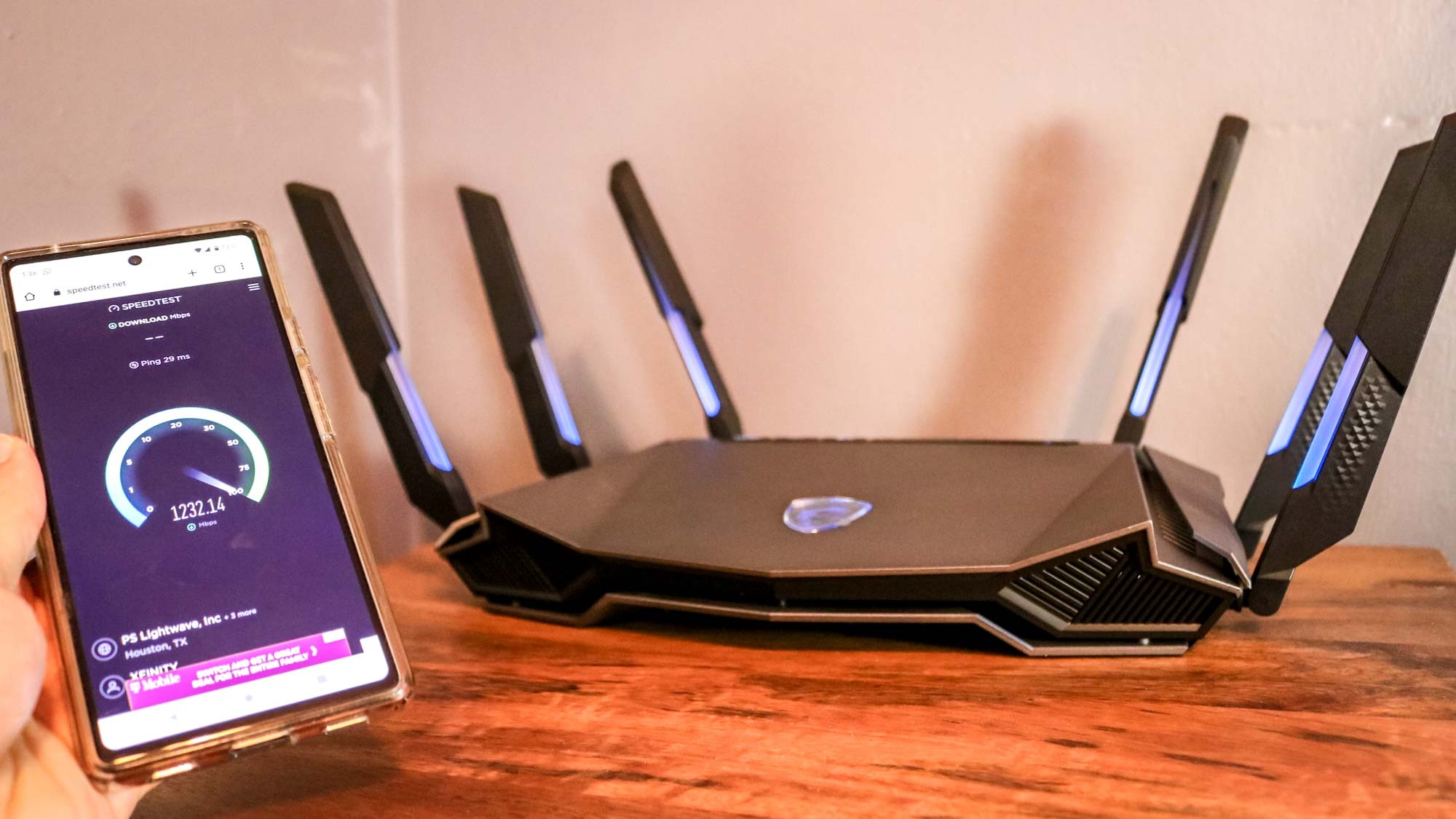
We test every router we review to measure performance and range, in addition to hands-on use to evaluate the ease-of-setup and quality of settings and features.
Throughput describes how much data the router can move back and forth over its wireless connection. Higher throughput will serve you better in data-heavy uses, like streaming video, gaming, or connecting multiple users at once.
We measure throughput using Keysight IxChariot, first at a 15-foot distance without obstructions, so that we can gauge the maximum amount of data that the router can move. We then measure how much data the router can move at 50, 75 and 100 feet, so that you can also choose the best model for smaller homes and apartments, where short-range performance may be the priority.
We also test performance through walls and ceilings, to determine how well a router can provide signal in the Wi-Fi-dampening conditions common to many buildings and homes.
For mesh routers, we perform additional testing to determine how well the mesh system does sending a signal through both the main router and through a satellite unit.
Following out throughput tests, we also put the router through real-world tests by connecting a number of devices — laptops, TVs, smartphones, and tablets — and stream a number of games, TV shows and movies simultaneously to see how well the router performs under strain.
For more information on how we test networking devices, check out our guide on how we test Wi-Fi routers along with our more general how we test page for Tom's Guide.
Meet our testers

As someone who's been working from home for the past six years, Anthony Spadafora has tried everything from Wi-Fi extenders to powerline adapters to get the most out of his home network before finally upgrading to a mesh Wi-Fi system. Along the way, he's tested out loads of different routers and network configurations. Based on what he's learned, Anthony tries to highlight the critical role Wi-Fi routers play in our day to day lives and how a mesh network can help solve the most common connectivity issues like Wi-Fi dead spots.

With experience in testing, using and evaluating wireless data from before Wi-Fi was even a word, Brian Nadel has tried out and reviewed every major router available in his home networking lab. A LAN nerd, his philosophy is to use the router the way you would, testing networking gear for ease of setup, performance, security and above all for value. The result is peace of mind when it comes to choosing the right router.
Check out all of our home networking coverage:
Best mesh routers | Best Wi-Fi 6 routers | Best Wi-Fi 7 routers | Best gaming routers | Best Wi-Fi extenders | Best powerline extenders | Best cable modems
Sign up to get the BEST of Tom's Guide direct to your inbox.
Get instant access to breaking news, the hottest reviews, great deals and helpful tips.

Anthony Spadafora is the managing editor for security and home office furniture at Tom’s Guide where he covers everything from data breaches to password managers and the best way to cover your whole home or business with Wi-Fi. He also reviews standing desks, office chairs and other home office accessories with a penchant for building desk setups. Before joining the team, Anthony wrote for ITProPortal while living in Korea and later for TechRadar Pro after moving back to the US. Based in Houston, Texas, when he’s not writing Anthony can be found tinkering with PCs and game consoles, managing cables and upgrading his smart home.
-
Mark Spoonauer Archived comments are found here: http://www.tomsguide.com/forum/id-2918690/routers.htmlReply -
frawenz I am not sure at all what to buy for a 3,800 sqft really old home with plaster in the walls. We will be renting three guest rooms that will all need access to good wifi and a separate password. I need very fast (preferably wired) and reliable internet for work that doesn't slow down when guests use the internet. I would really appreciate a recommendation with approx. pricing. However, a good system is a higher priority to price.Reply -
avtella The Qualcomm CPU/WiFi chipset based Netgear R7800 has the best 5Ghz range/performance of any consumer router I have tested (am a beta tester) and a pretty good 2.4Ghz performance as well. Better than any on that list to be honest. If you want in depth reviews look at small netbuilder and CNET has some simpler reviews too but the R7800 in pretty much most sites, tops other routers in 5GHz performance and range. VPN performance is also better than the Linksys units as it has more powerful/newer gen CPU. Also its the only one with a properly working MU-MIMO implementation. The R7800 actually is more powerful CPU and WiFi chipset wise than the R8500, only advantage the R8500 has is the extra 5Ghz band which I don't think will help you that much and will definitely not increase range by any means. The Synology RT2600AC also uses the same hardware as the R7800 and is also a good alternative.Reply
Broadcom based routers from Netgear/Linksys (Marvell based units as well)/Asus can cause performance degradation with MU enabled, as Broadcom's implementation sucks. The Asus 86U is also close to the R7800 WiFi wise but its Broadcom based, though using an improved WIFi chip compared to older Broadcom units. FYI compared to the 88U (similar to R8500) the 86U is actually more powerful and using newer gen hardware, only reason the 88U is higher priced is due to extra lan ports. -
robo21 I would avoid Netgear like the plague, I have had the worst support experiences with them. 90 days tech support, lousy warranty and their technical support staff lies trying to sell extended support packages. They actually told me that I needed to upgrade my Internet Service File for $99.95. What a crock!Reply -
r.s.lynn I want to buy a new wifi router that has the functionality to allow geographically distant family to download selected photos and videos from a USB-attached external hard drive. It would be convenient for me to know which wifi routers have US-based tech support. ASUS does not have, at least not at level 1, native English speakers, and the ones I spoke with had poor English skills.Reply -
dnrcohen I have a backhouse that is about 75 feet away from the main house. We will be connecting a desktop (in the backhouse) , a laptop and a phone line (although none will probably be used at the same time. Which router would you recommend. Thanks!!Reply -
ljctx49 ATT is installing the BGW 210-700 Modem/Router as their latest unit.Reply
Questions:
1 - ATT sells the AirTies 4920 as a match to establish a whole house mesh network. Any experience?
2 - What is the average range of the BGW?
3 - Why should I buy another router and bridge the BGW for $XXX AND added complexity? -
captjackny How about a review of the Edimax routers? Model 6208 V2 is under $50 and has a lot of features such as 802.11ac.Reply -
pat.mccarthy07604 How about the Norton router. Norton touts it as the greatest thing since sliced bread. Would like your opinion.Reply
